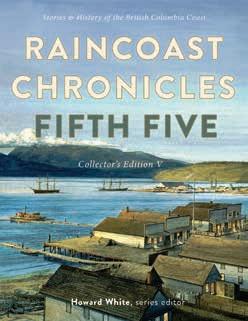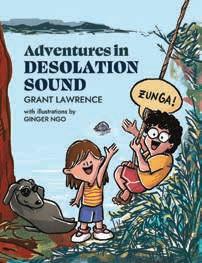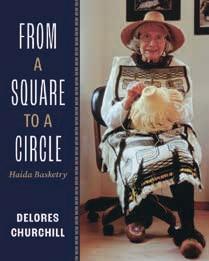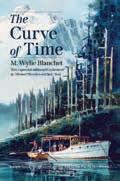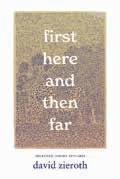




















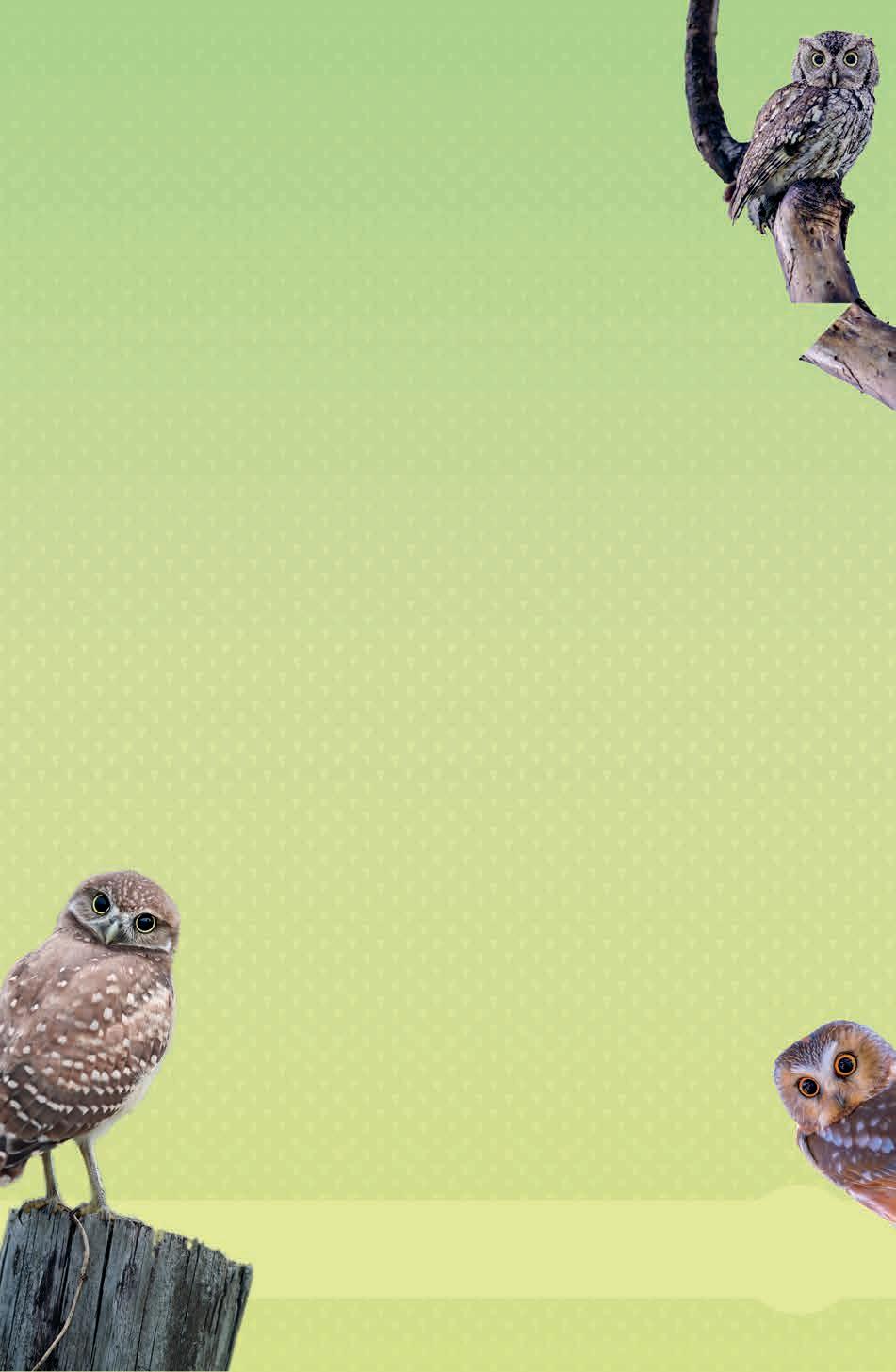














“Blends personal stories with engaging nonfiction…A timely narrative for young readers living in the aftermath of COVID-19.” —Booklist


















“Appealing and engaging…Reveals how the act of sharing food and eating together promotes well-being and a greater sense of cooperation and community.” —Booklist















“Gives succinct, interesting explanations of topics related to humanity’s connection with nature…Leaves readers with fun, inspiring ways to get off their screens and go outside.” —Booklist







“The impressively comprehensive text is chatty and entertaining…Spectacular photos make each spread a visual treat…This illuminating avian introduction is sure to make an owl ally out of anyone.” —Booklist












Humans damaged the environment we depend on for our survival. Learn about ecological restoration and the people and projects trying to make those ecosystems healthy again.
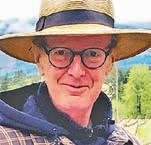
Daniel Marshall Untold Tales of Old British Columbia (Ronsdale Press $24.95)
Linda Gabris
Wild Harvest BC: A Foragers Guide to Edible Plants of British Columbia (Sandhill Book Marketing $24.95)
Diane Morrisseau with Elisabeth Brannigan
One Second at a Time: My Story of Pain & Reclamation (UBC Press $24.95)
Perry Bulwer
Misguided: My Jesus Freak Life in a Doomsday Cult (New Star $26)
Ken McGoogan
Shadows of Tyranny:
Defending Democracy in an Age of Dictatorship (D&M $36.95)
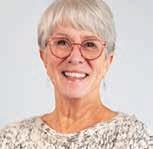
Susan Blacklin
Water Confidential:
Witnessing Justice Denied— The Fight for Safe Drinking Water in Indigenous and Rural Communities in Canada (Caitlin $24.95)
Aaron Williams
The Last Logging Show: A Forestry Family at the End of an Era (Harbour $24.95)
Leona Prince & Gabrielle Prince
Be a Good Ancestor (Orca $21.95)
Tamas Dobozy
Stasio: A Novel in 3 Parts (Anvil $22)
Mikaela Cannon
Foraging as a Way of Life: A Year-Round Field Guide to Wild Plants (New Society $44.99)
Sheila Harrington
Voices for the Islands: Thirty Years of Nature Conservation on the Salish Sea (Heritage House $34.95)
Lorraine Weir with Chief Roger William Lha yudit’ih
We Always Find a Way (Talonbooks $35)
ailing from West Vancouver, 24-year-old Teo Wolf is working at a Paris restaurant when a boyhood friend, Magnus, calls him unexpectedly in Timothy Taylor’s novel, The Rise and Fall of Magic Wolf (Dundurn $26.99).
“You cooking in Paris. Who picked you for the future celebrity?” says Magnus.
Teo denies it’s a glamourous vocation and more like hard work. “Twelvehour days, six days a week. And on the seventh day, you worked only eight hours because we didn’t do Sunday dinner.”
Worse, there’s seediness in the back kitchens where sexism, harassment and violence are rampant. Teo says the owners are psychotic: “Psychotic like hitting people. Like throwing plates, grabbing you by the balls.”
Teo and Magnus cook up an idea to build a restaurant empire in Vancouver with Teo’s French food expertise and Magnus’ money. The company brand uses Magnus’ nickname (Magic) and Teo’s last name (Wolf), hence “Magic Wolf.” They are successful—at least for a while. Then media reports explode about one of their top chefs being a sexual predator which, in the #MeToo era, threatens to destroy the company.
Taylor’s breakout novel, Stanley Park (Knopf, 2001) is about foodies and unsolved murders, the latter a sign of his darker themes that are part of this new title, too. As his author blurb states, Taylor writes about “contemporary people with contemporary problems, almost invariably of their own making.”
9781459753198

As interest grows in those born between 1980 and 1995, the “Millennial Generation,” or “Millennials” as they are known, it was only a matter of time before they became the focus of novels.
Vancouver’s Alex Kazemi , born in 1994, is technically a Millennial but he’s pretty close to the latest crop of adults known as Gen Z (born between 1996 and the early-mid 2000s). He spent ten years researching Millennials’ favourite brand names and pop culture influences (MTV, the stylistic and ruthless violence of Quentin Tarantino films, raves, etc.) for New Millennium Boyz (Permuted/Simon & Schuster $28). Kazemi’s characters aren’t particularly likeable, but then many were born when the “greed is good” ethos became rampant in the 1980s.
Kudos for Kazemi’s portrait has come from many literary trendsetters including the chronicler of Generation X, Douglas Coupland, who called this novel, “A no-holds-barred tour of the Millennial mindset’s spiritual DNA. Anything goes.”

9781637583913

n a
Idebut,
Burns tells of “kid” from childhood to early adulthood.
It begins with kid dreaming of spiders. His grandma tells him “it means you’re changing. you’re growing up.” (Burns uses very few capitalized letters, even at the beginning of sentences; and she doesn’t use actual names, choosing instead references such as “older cousin” and “neighbour.”)
Vancouver-based Burns limns kid’s world with impressionistic descriptions: “kid kicked at a dandelion, white fireworks exploding its brains in a thousand directions. it was an afternoon where time was meaningless, where the dry heat rose high and heavy, where grass-stained knees and bruises marked the war against boredom, where a backpack and a good stick was all kid needed.”
Traumatic times are written like concrete poetry with words printed in graphic patterns to better convey kid’s feelings. At one point a pamphlet about gender transition appears. Thereafter, kid becomes “she.”
Burns is a Saskatchewanborn trans woman inspired by folklore, nature, the occult and bodily transfiguration.
9781998926190

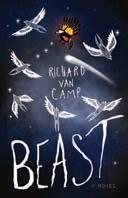
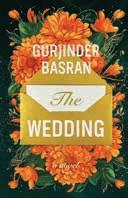
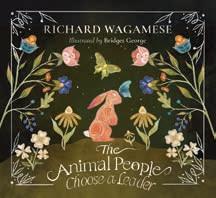
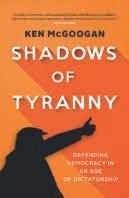
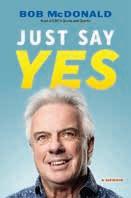

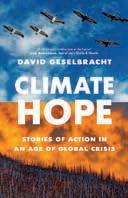


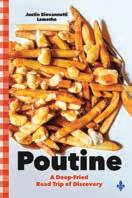

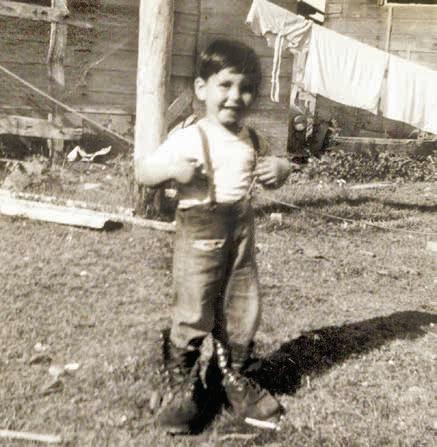

rowing up in Port Hardy in the 1950s and 1960s, Michel Drouin says he was “the beneficiary of free-range child rearing” in his memoir Past the End of the Road: A North Island Boyhood (Harbour $24.95). “Once we were out the door, we were free to do what we liked.”
When his French Canadian family moved to Port Hardy in 1953, it was a remote logging village, “not even at the end of the road,” he says. “There was no road out. The northern part of Vancouver Island was only connected to the rest of the island when the logging roads from the north met the logging roads from the south in 1963. Until then, the town was accessible only by sea and air.”
With siblings or friends, or on his own, Drouin wandered “up the local rivers, trying to catch trout or harass salmon spawning in fall, dodging black bears who were doing the same thing. We [ran] around in the woods, cutting trees down and building cabins we never finished, or [rowed] out in the bay.” He also set himself on fire once, split his knee open with a hatchet and had a friend shoot him between the eyes with a BB gun, barely escaping being blinded.
Drouin would marry and have his first child in Port Hardy before moving away, believing that his early life had been “lacklustre and boring,” only to realize years later he had witnessed “a transition of lifestyles from the handlogger/ gas-boat era to the computer age,” and that this life would never be experienced on the coast again.
9781990776670
n her last novel, Piranesi’s Figures (New Star, 2016), Vernon-based Hannah Calder’s title refers to the 18th century artist Giovanni Battista Piranesi whose architectural etchings of grand buildings are peopled by decrepit humans in the foreground. Her third novel, Hester in Sunlight (New Star $29.95) is inspired by Nathaniel Hawthorne’s historical fiction, The Scarlet Letter, originally published in 1850 and set in Puritan Massachusetts between 1642 and 1649, which follows Hester Prynne, who conceives a daughter that is not her husband’s and endures public shame and isolation. As punishment, she had to wear a scarlet letter ‘A’ (for adultery) on her clothes.
Calder’s Hester in Sunlight is a repurposing of Hawthorne’s novel for a different story about relationships between a narrator (unnamed), her husband, Sonny, and their gender-fluid child, Luna; the narrator’s sister, Dani, and her two children; and their parents. Whereas Hawthorne’s Hester is the tale of a mother raising her daughter in difficult circumstances in 17th century America, Calder’s version of Hester is a rumination on contemporary motherhood and parenting. 9781554202102
etired Anglican priest, Kathleen S. Schmitt of Burnaby, explores her interest in the idea of a female Christ figure and liberation theology as it applies to Central America in her third novel, Magnificat: Song of Justice (Inanna $24.95), about two women living very different lives: Sara, who has escaped a Vancouver mental health facility to travel to a war-torn Central American town to rescue her daughter; and Maria Luz, a campesina who is trying to lead her people past the war that is ruining her country. Sara becomes gripped with Maria Luz’s campaign and wisdom and is radically changed. In one of the novel’s conversations, a fellow bus rider tells Sara of the US dumping cheap corn into the Mexican market, putting many small farmers out of work. He predicts that “one day the U.S.A. will regret causing a landslide of immigrants across its borders—a lot of those people were employed and self-sufficient until recently.” 9781771338721
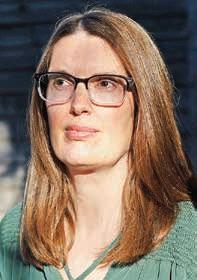

RG Reflecting a world that is increasingly inhospitable to immigrants, Holly Flauto dissects the Canadian application process for “permanent residency” in her collection of memoir-based poems, Permission to Settle (Anvil $20). Each chapter is titled after a question from the application document and Flauto’s poems serve as musings and responses, addressing both what is asked and what is usually left unsaid.
The process is unsettling, as indicated in the poem 2a. Have you ever used any other name (e.g. nickname, maiden name, alias): “please remember in a nonemotional way / the box demands / how much this made you the you we are evaluating / while staying the you / you’ve hung yourself to become.”
Flauto shines a light on the bureaucracy involved and captures the accompanying anxiety and feelings of inadequacy aroused by the application process. She also explores the sense of privilege associated with her relatively easy immigration journey from the US to Canada as a modern-day settler. Flauto teaches at Capilano University.
9781772142389

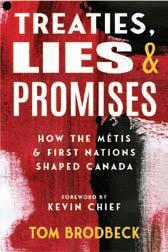
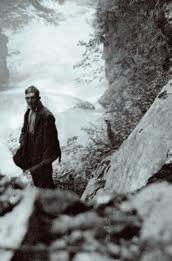
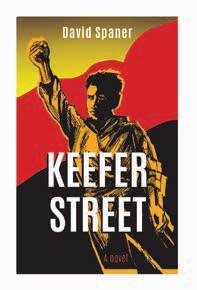
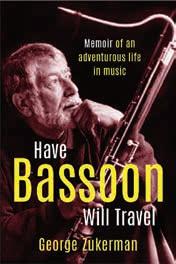
How the Métis and First Nations shaped Canada
Tom Brodbeck
This riveting and essential account of the links between the Red River Resistance and the numbered treaties explores a largely unknown part of Canadian history.
“This book is a great gift to Manitobans and to all Canadians.”
KEVIN CHIEF, member of Minegoziibe Anishinabe (Pine Creek) First Nation, Treaty 4; co-founder of the Winnipeg Aboriginal Sport Achievement Centre.
978-1-55380-716-2 (PB) 6 x 9 202 pp $24.95
Daniel Marshall
A collection of fascinating stories of the extraordinary and astonishing in B.C.’s history.
“Riveting! Guaranteed that when you start reading you won’t quit and you will emerge with a new, and often unsettling, view of this place known today as ‘British Columbia.’”
WENDY WICKWIRE, author of At the Bridge
978-1-55380-704-9 (PB)
978-1-55380-705-6 (EBOOK) 6 x 9
David Spaner
Jake grows up on Keefer Street in the dynamic working-class immigrant neighbourhood of Strathcona in Depression-era Vancouver but his left-wing, rabble-rousing street politics lead him to join the volunteers fighting fascism in the Spanish Civil War.
“David Spaner knows the history he writes about. Keefer Street is a welcome addition to the field of Canadian fiction.”
JONAH RASKIN, author of Beat Blues: San Francisco, 1955
978-1-55380-720-9 (PB) 5 x 8 320 pp $24.95
Have Bassoon, Will Travel
Memoir of an Adventurous Life in Music
George Zukerman
With humorous anecdotes and compelling stories, trail-blazing George Zukerman recounts his life as concert bassoonist and impresario.
“He lived a big life, eventful, ambitious. It was the sort of life that generates stories, more than a few, and we’re lucky he set some of them down for us here, in his own confiding, humorous, inimitable voice.”
BILL RICHARDSON, writer and broadcaster

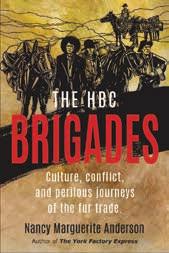
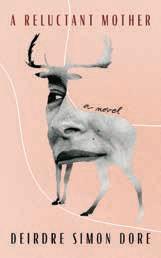
Susan Grundy
A poignant memoir of a caregiver’s lifelong struggle to break through the barrier of her sibling’s mental illness in search of sisterhood.
“A gripping and heart-wrenching memoir.”
SUSAN DOHERTY, author of the award-winning The Ghost Garden and Monday Rent Boy
“An indispensable book for those of us who love someone with a mental illness.”
PETE EARLEY, New York Times best-selling author of Crazy: A Father’s Search Through America’s Mental Health Madness
978-1-55380-718-6 (PB)
6 x 9 230 pp $24.95
Nancy Marguerite Anderson
A lively recounting of the gruelling thousand-mile trail faced by the brigades as they pushed over mountains and through ferocious river crossings to reach fur-trading posts as First Nations people struggled with the desire to resist or assist them.
“An essential reference for anyone interested in early BC.”
RICHARD MACKIE, publisher, The British Columbia Review
978-1-55380-701-8 (PB) • 6 x 9 • 260 pp • $24.95
Deirdre Simon Dore
Frida and her husband Blake have chosen not to have children. Concentrating on her artistic career instead, Frida has mostly managed to accept this difficult decision. That is, until a stranger knocks on their door with a child she insists is Blake’s daughter.
“Dore’s heroine, is fierce, hard core, full of fire, with a moral compass just steady enough to navigate nightmares and heartbreak.”
LISA MOORE, author of February
978-1-55380-710-0 (PB) 5 x 8 350 pp $25.95
Jaymie Heilman
Three teens set out to stop a pipeline, but their secrets, anxieties, and one obnoxious ex-boyfriend might just explode their friendship first.
“Smart, funny and engaging with entirely realistic teen characters dealing with important social issues. A fast-paced book with excellent believable dialogue and likeable characters.”
ALBERTA VIEWS
978-1-55380-689-9 (PB)
978-1-55380-690-5 (EBOOK)
5 x 8 200 pp $19.95
Apocalypse Child: Surviving Doomsday and the Search for Identity at the End of the World
by Carly Butler
(Caitlin Press $24.95)
BY SENURI WASALATHANTHRI
As an avid cinephile and a lover of fiction, mystery and thriller novels, I often pondered what it would be like to be “on the run.” To escape society, live off the grid with just the essentials, waiting on pins and needles, not knowing what would happen. Carly Butler knows what it feels like and tells all in her memoir, Apocalypse Child Butler’s childhood began in 1990s Montana where she was raised by a fiercely independent single mother, DJ. Together they worked on various housing projects, ran a bed-and-breakfast and brought music to their local church. By the age of three, Butler and her mom were frequently moving from place to place, a pattern Butler would only understand later in life. During her early years, Butler attended kindergarten at a private Christian school and both she and her mother were deeply passionate about the evangelical Christian faith.
In 1997, as Butler was settling into life in Whitefish as a third-grader trying to fit in with the popular kids, her mother woke her up to shocking news that the world was about to end. “It’s called Y2K, and it’s going to end the world on the first of January, the year 2000,” her mom blurted. “Computers aren’t going to work anymore, governments are going to fall, we’re going to see military takeover from other countries. So, I think God wants me to take you out of school when you’re done this year. He told me to set you apart, that you’ll be just like everyone else if you stay there. We can still see your friends for as long we can, but you’ll be starting fourth grade at home, okay?”
Believing every conspiracy theory and evangelical Christian prediction about governments and their inevitable takeover, Butler’s mom was determined to go on the run in an attempt to save her daughter’s life. The year 1998 rolled around and as DJ was looking into safe places to ride out Y2K, a friendly encounter Butler had at the local library changed their destiny. “An elderly man came up to me, seemingly out of nowhere, and gave me a Canadian one-dollar coin. He called it a loonie. ‘Don’t spend it all in one place,’ he said with a wink as he walked away,” says Butler. Thus, in September of 1998, Butler and her mom found themselves in Smithers, BC, renting a cabin 45 minutes out of town—which became their safe haven and a source of strife at the same time. Eleven-year-old Butler spent the next four years in that cabin, facing more challenges than any child her age should have to endure. Her mother prepared her for every conceivable apoca-
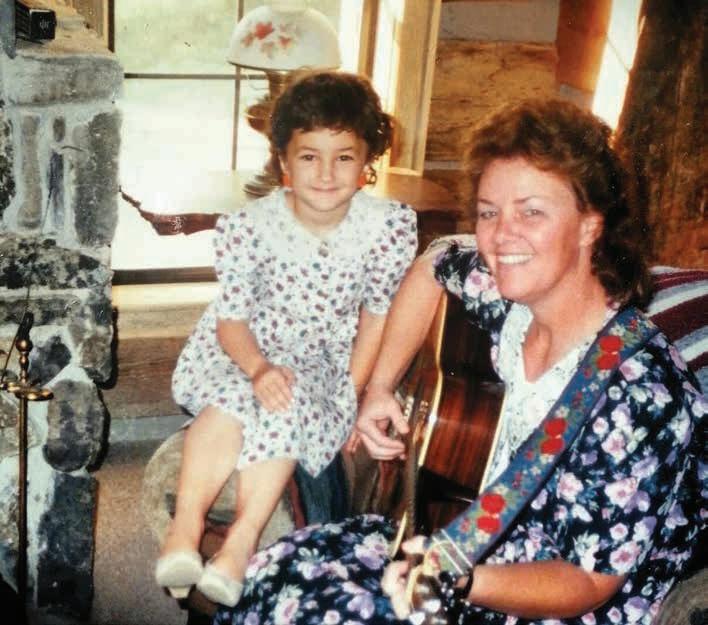
through a
lyptic scenario, even training Butler how to respond if something happened to her. “Animals farmed and definitely unfarmed. Snow taller than my waist. Trekking every which way for survival whether by quad or snowmobile or foot,” recalls Butler. “Storing up food that was never eaten except by kleptomaniac squirrels. Watching my mom break down and cry after the windmill for electricity died, and again when the pipes froze so we had to melt buckets of snow-water and use an outhouse, and again when our favourite dog got into the anti-freeze and seizured her way into a yellow-tongued death.”
As she was waiting for death and destruction to show up at her doorstep, Butler longed to ask, “Why are we doing this? Why is this happening to us?” but never spoke up because, ultimately, none of it mattered; she had to learn how to detach emotionally, as it was too painful and risky. But doomsday never came. After the dawn of the new millennium, Butler and her mom went into town only to realize that nothing had changed. No riots, no guns, no war—just regular
people living regular lives.
By this time, Butler was not attending high school and she was living in Canada without any legal documentation. She became determined to change her destiny. She started by building a community of friends through the local church who treated her like fam-
ily. Later, Butler decided to get her GED diploma and took up babysitting, cooking and cleaning jobs to make an income. Eventually Butler’s faith in her mother’s apocalyptic predictions withered. “I was especially tired of the one big secret: other than my GED, I didn’t exist,” says Butler. “And this fact, this secret, kept coming up, over and over, and getting in the way as I tried to forge ahead, making a life for myself that didn’t anticipate the end of the world.”

tWith the help of those closest to her, Butler moved out of her mom’s place, started her paperwork to get permanent residency in Canada and then fell in love with a kind and generous man with whom she had two children. She also came to learn that she is of Yaqui descent like her father, and that she is bisexual.
Reflecting on her plethora of struggles—navigating the Canadian wilderness, overcoming religious trauma, forging a legal pathway to live in Canada, discovering her ancestral roots, accepting her bisexuality, getting through pregnancy loss and so much more—Butler concludes “Apocalypse may strike daily, but the world never ends.”
9781773861326
Senuri Wasalathanthri is a Vancouver based publishing assistant, writer and student.
BY HOWARD WHITE
My wife Mary and I, being young, disaffected and looking for something useful to do with our English degrees, decided to start an underground newspaper in 1969. We had the vague notion that in an ideal world we’d like to have something to do with writing and books. Then we started the paper in a moment of indignation. Then we ended up with a working print shop, and people began bringing us manuscripts. At first, we demanded they pay for the printing but their cheques bounced so we had to start selling the books ourselves to get our paper and binding costs back. That sort of worked.
So, people brought more manuscripts and the thing snowballed. We didn’t realize we had become book publishers until we’d been doing it for ten years.
Mary taking the lead in the business
In early 1980, Mary went to the summer Publishing Workshop in Banff and came back with the news that what we were doing was actually a recognized activity not totally unique to ourselves and we could begin calling ourselves publishers. It was right around this time she went out and spent $8,000 that we didn’t have on the very first commercially available Apple computer, which had, I believe, 48 K of memory. That’s when I realized one of us was quite serious about making this expensive hobby into a paying business.
To this day I can’t believe she bought that computer. Nobody we knew had a computer. But the dealer—a moonlighting science teacher—assured us it would pay for itself overnight. It did pay for itself and put our wonky little operation in Pender Harbour at the cutting edge of automation in the publishing industry.
Turning down the Harry Potter books
Funny story there. Mark Stanton and Allan McDougall were then feisty young book salesmen representing mainly Toronto publishers in western Canada and they decided to start up a book distribution service which they wanted to call Raincoast Books. Mark phoned me to ask if that would be okay—he knew we had invented the word—I was a bit hesitant because of the potential for confusion, but Mark argued I should view it as an honour and I relented. Fast forward a few years and MacDougall stops me in a parking lot and says he has a book I might be interested in. I can hardly believe this myself, and Stanton is probably going to say it’s complete bullshit, but this is what I remember. They have a distribution deal with the English publisher Bloomsbury Books but sometimes they are required to take on a book that’s too niche. They have one now he thinks might be just right for Harbour, a kind of old-fashioned boys’ book in
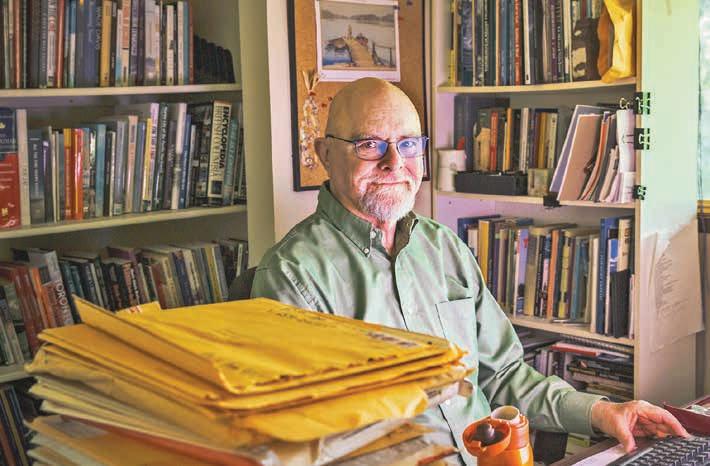
Howard White’s often hilarious, behind-thescenes stories about 50 years of publishing from the small town of Madeira Park and why he turned down the Harry Potter books.
the Narnia mode called Harry Potter Something Something. It was the first of a series and in the UK it had sold only modestly. If I would agree to take it off their hands, I could have the rights for all North America.
Well, I figured we were having it hard enough without taking on Raincoast’s rejects, so I said, ‘sorry Allan, I think you’re stuck with that one.’ It was just months later the Harry Potter craze exploded and made Raincoast the richest publisher in Canada. It tells you everything you need to know about my publishing acumen that when Allan offered to give me another kids’ book series that he didn’t want, called Timmy the West Coast Tug, I said, ‘Now you’re talking!’
So, we lost the chance to become the North American publisher of Harry Potter and retire to a Caribbean beach at 30. Probably just as well. It would have interfered with our mission of exploring BC character. And we did quite well with Timmy the West Coast Tug
Harbour Publishing’s notable authors over the years
Along about 1980, Thora Howell, the saintly Nanaimo bookseller, began campaigning to put us together with a writing friend of hers whom she called Cam. This was Barbara Cameron a.k.a Cam Hubert a.k.a Anne Cameron , who had already achieved notoriety by writing an underground bestseller called Daughters of Copper Woman and a novelized film script called Dreamspeaker but was having trouble finding a publisher for her next book, a collection of erotic lesbian poems called
Earth Witch. Nobody wanted to touch it, not even Press Gang, the feminist collective that had sold 100,000 copies of Daughters of Copper Woman.
I read the manuscript and decided we could do no better than to publish this dynamite little book, which we did in 1982. It went into numerous printings and sold 10,000 copies, unheard of for a book of poetry. That was the beginning of a beautiful friendship. We ended up publishing more books by Cam than any other author—36 in total.
There are so many other milestone books by game-changing authors I couldn’t name them all if I had a week.
The saintly Hubert Evans, one of our first, who at age 87 wrote his fine novel O Time in Your Flight, a photographic remembrance of daily life in the year he turned 10, which was also the year the twentieth century began. Bus Griffiths, a logger who wrote the story of his life in the form of one long comic book called Now You’re Logging!—now considered Canada’s first graphic novel. Edith Iglauer, the sophisticated New Yorker writer who went out on a salmon troller to do a story on commercial fishing, married the skipper and spent the rest of her long life in the tiny fishing village of Garden Bay. Not only did she give us half a dozen fine books including the classic Fishing with John but she later married my father into the bargain.
There’s Ken Drushka, the former Toronto hippie who rode across the Rockies on horseback, started a flaky shake-cutting effort called Cosmic Logging and eventually became BC’s leading historian and critic of the log-
ging industry. Chris Czajkowski, the ex-British nurse who moved onto a mountaintop in Tweedsmuir Park and spewed out a great stream of books about living in the wilderness. Mas and Stan Fukawa and their detailed histories of the Nikkei fishing community, Alan Haig-Brown covering the waterfront, labour historians Rod Mickleburgh and Geoff Meggs, the marine life specialists Andy Lamb and Rick Harbo, the mad cartoonist Adrian Raeside, the great poets Patrick Lane, John Pass, Tom Wayman and Al Purdy, who we had the honour of publishing for much of their distinguished careers.
In the 2020s, the great development has been the welcome emergence of a generation of confident new Indigenous writers like Michael Nicoll Yahgulanaas, Frederick McDonald, Roy Henry Vickers, Joseph Dandurand and Darrel McLeod. It’s so dangerous to start listing names because so many must be omitted. We are grateful to them all, even the ones who drove us nuts.
The next 50 years
As soon as people learn I am in book publishing they tend to look pitying and say, ‘I guess you’re having a real struggle what with the internet and eBooks and all.’ I have a set response to that: ‘Yup.’ Thing is, there has never been a year in all these fifty when Mary and I felt we could lean back and say, ‘okay we got ‘er made now.’ The road ahead has never been clear and straight. If it were, it wouldn’t be the book business.
In our wildest dreams we never believed we would still be going half a century on, bigger and better than ever and we have no right to be anything but thankful. It has been an unimaginable privilege.
Excerpts taken from a speech Howard White gave at the event, “100 Years of BC Books,” celebrating his and Don Stewart’s (MacLeod’s Books) 50 years each in the book business.

























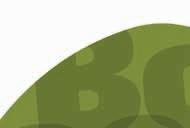







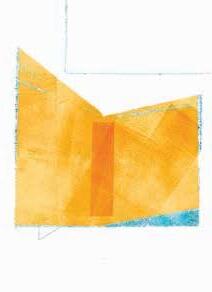


William Gibson (born March 17, 1948), the international bestseller of speculative fiction who foretold of the transformational effects of the information age before they happened, also invented the term “cyberspace.” With the publication of his first novel Neuromancer (1984), Gibson achieved unprecedented success by winning the Hugo and Nebula Awards for best science fiction novel of the year, plus the Philip K. Dick Award for best original science fiction paperback. Critics credit him with
“renovating” science fiction/speculative fiction and elevating its literary qualities. Gibson wrote his first published work as a UBC assignment and based his entire writing career from Vancouver. Many of Gibson’s thirteen novels (and one co-authored novel) have been made into feature films and TV series. Gibson has also written numerous scripts for films and TV. His work continues to influence more than the literary world, reaching into design, music and technology.
Since 1995, BC BookWorld and the Vancouver Public Library have co-sponsored the Woodcock Award and the Writers Walk at 350 W. Georgia St. in Vancouver. This $5,000 award is also sponsored by Dr. Yosef Wosk, The Writers’ Trust of Canada, and Pacific BookWorld News Society.



Reviewer Heidi Greco says Points of Interest
is “better than any road trip I’ve yet managed, these stories make me hungry to explore.”
Points of Interest:
In Search of the Places, People, and Stories of B.C.
Edited by David Beers & andrea bennett (Greystone $24.95)
BY HEIDI GRECO
Readers of the online news provider, The Tyee, will be familiar with the names of many of the writers whose work is included in this anthology. Their articles take us the length and breadth of the province, from Atlin to Victoria; Bella Coola to Creston. Better than any road trip I’ve yet managed, these stories about our province make me hungry to explore.
Points of Interest editors David Beers and andrea bennett have selected a range of writings that span more than geography. “Many people are drawn to this far western side of Canada because spiritually, intellectually, viscerally, they know they belong on that edge,” says Beers in his introduction. “This book offers thirty opportunities to sample such essences, through voices as varied as our sprawling, geographically and culturally diverse province.”
And sprawling they are. Neil Griffin offers an array of facts about the alwaysintriguing monkey puzzle tree, from its prehistoric origins in the mountainous regions of Chile to tracking how it made its way to Vancouver Island and beyond. Another treasure revealed, this time a human one, is a down-to-earth conversation with the late author, Anne Cameron at her home in the remote village of Tahsis. Cameron’s publisher, Howard White, has called her “the William Faulkner of the B.C. coast,” an accolade that rises from her skill at describing our coast. An author with opinions both strong and plainly put, when asked how she’d like to be remembered, Cameron replied, “I don’t think we should make a big point of remembering anybody. We should maybe just put all our energy into making things better for the next bunch.”
years in residential school as a child. Laing’s memories range from idyllic scenes of bathing in the river with her grandmothers (before being taken away) to the day she sat planning her own death, a gun held to her mouth (after returning home). Luckily for her—and us—she was saved from suicide. Among many accomplishments in her life, she testified at the Truth and Reconciliation Commission’s hearings. The stories she shares are heartbreaking and include having to hide from her own father, who’d also gone through the residential school system. Mast cites an anthropologist who compares the intergenerational trauma felt by our Indigenous sisters and brothers to those of the children of Holocaust survivors.
Some of the pieces raise more questions than they answer. Michelle Gamage writes about the aftermath of 2021’s White Rock Lake fire “north of Kelowna...along the highway toward Kamloops.” It burned “an area seven times the size of Vancouver and caused at least $77 million in insured damage.” As with any fire—forest-based or restricted to a single dwelling—there are challenges when it comes to dealing with insurance providers. In the fire Gamage writes about, such matters are further complicated because many of the victims include those unable to acquire the small protection afforded by insurance, all because companies often refuse to sell a policy to those who live in situations deemed high-risk.


Several writers concern themselves with ways that indeed are making things better, like Jim Grieshaber-Otto who runs a family farm in Agassiz. With help from UBC’s Community Supported Agriculture program, they’ve learned to grow wheat, along with rye and oats. As journalist Christopher Cheung points out, “the vast majority of B.C.’s grain comes from the Peace River region,” yet by the time you read this, a great deal of that valuable farmland in the Peace will have been flooded by the extensive reservoir of water at Site C. It’s probably a good thing that farmers in the rainy Lower Mainland are learning how to grow the grains we rely upon for our daily bread.
Meghan Mast’s piece puts its focus on Gina Laing, now in her seventies, who endured ten
And no book about our beautiful province would be complete without discussions of the natural resources here, and about the ways they’ve been depleted.
Arno Kopecky ’s piece, originally published on The Tyee in 2021, brings voices from both sides of the dispute at Fairy Creek. Still, it’s hard to think about “trees that range from 250 to two thousand years old” being felled. The current state of dwindling wild salmon populations is in stark contrast to a comment included in Colleen Kimmett’s piece, “Xwìsten” where Chico Williams, a ferry operator on the Fraser River claims that “migrating sockeye would be so thick…you could walk across the river without getting your feet wet.”
As Michael John Lo points out in his piece about Cumberland, “A museum is a place that holds stories of the past…also a place that holds space for the present.” Like just such a museum, this book takes us on adventures most of us will never experience: a cattle drive, a rather pokey train ride, hours of travel by boat to simply pick up the mail. You might like to think of it as a road trip of the mind—full of promises of places to go, come summer again.
9781778401381
Heidi Greco lives on the territory of the Semiahmoo First Nation in Surrey where, according to one of the “Quick Facts” at the end of each chapter in Points of Interest, Lady Gaga once played a gig with tickets going for $25.

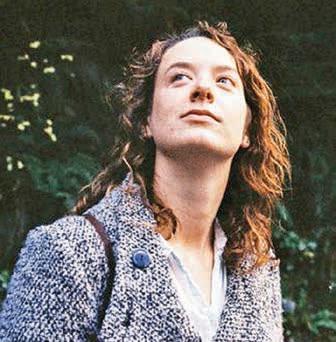


The HBC Brigades: Culture, Conflict, and Perilous Journeys of the Fur Trade by Nancy Marguerite Anderson (Ronsdale $24.95)
BY TOM HAWTHORN
This book is exhausting—but not for the reason you might expect. Make no mistake. The HBC Brigades is a fine book with crisp writing nicely balanced between the author’s voice and the journals of Hudson’s Bay Company men. It’s the subject that is exhausting because the journeys almost defy belief.
To get valuable furs from New Caledonia, the vast interior of what is now British Columbia, to the Pacific Coast and onwards to markets in Britain and elsewhere, hardy HBC men faced a grueling task. They needed to get heavy loads of furs out and supplies in by improving historic trails used by Indigenous inhabitants. They often were also blazing new trails over unmapped and inhospitable lands.
In their way was some of the most unforgiving geography this continent has to offer. Impassable mountains. Treacherous rivers. Vast bogs. Heavy forest. Inhospitable desert.
George Simpson, the HBC governor and one of the world’s great travelers, successfully journeyed down the Fraser River to the company’s trading post at Fort Langley in light canoes with skillful bowmen, but he recognized in his writings that the rapids, the projecting rocks and the looming canyon walls made “the passage down, to be certain Death, in nine attempts out of Ten. I shall therefore no longer talk of it as a navigable stream.”
The HBC Brigades describes the annual tribulations of the Scottish, French-speaking Canadiens and Métis voyageurs, as well as First Nations guides, who struggled to bring their cargo to the sea. The need for new routes became more urgent after the international border was extended along the 49th Parallel from the Rocky Mountains to Point Roberts on Georgia Strait. The newly settled border placed the HBC’s Fort Vancouver, located on the Columbia River, well inside American territory. To avoid taxes, the HBC needed the brigades to travel within British territory.
The author, Nancy Marguerite Anderson, a member of Métis Nation British Columbia, is herself the ancestor of a voyageur. Her previous book, The York Factory Express (Ronsdale, 2020), described the epic 4,200-kilometre return journey of fur traders from Fort Vancouver to York Factory on the west shore of Hudson Bay.
Her latest work is filled with fascinating characters such as Alexander Caulfield Anderson, who is influenced by the romantic writings of James Fenimore Cooper; the violent Peter Skene Ogden; the First Nations guide and trader, “Black-eye;” and the future colonial governor, James Douglas , an unyielding boss whose diplomacy averts slaughter and a racial war.
We also get hints of life in the isolated forts and trading posts. Among the HBC clerks, the Métis are known

tThe HBC brigades almost defy belief in their trek across unforgiving mountains, treacherous rivers, vast bogs and deserts.
for their passions, whether voyaging or arriving with their shipments. No matter how tired, one clerk noted, “if he but hear a discordant jingling of an ill-tuned fiddle he must be up and capering with ever and anon an inspiring ‘Hi! Hi! Hi!’ inviting others to join in the dance.”
The harshness of the landscape and a life upcountry is expressed in the naming of geographic features. A Fraser River canyon might be a terrific fishing ground for the local Indigenous people, but for anyone in a laden canoe or boat it is a deadly trap known as Hell’s Gate. The Rivière de Trepannier is named for an emergency medical operation conducted on its banks—a trepanation (the drilling of a hole in a skull) on an Okanagan man who had survived a bear attack.
A constant concern was the supply of horses. Once purchased for as little as a blanket, a growing demand led to a steep rise in price. As pack animals, horses endured terrible conditions. The belts used to hold their loads chafed and cut through their flesh. Their unshod hooves were cut by jagged rocks. Horses drowned while fording rivers or fell off steep cliffs. Grass on which to feed was scarce, and the nomadic nature of the trade meant no one was growing feed for the winters.
In the harsh winter of 184849, 150 horses died at Ford Alexandria in the North Cariboo, while another 250 of 400 horses starved in Kamloops. Local Indigenous Peoples suffered great deprivations and starvation, too, though their numbers went unrecorded.
Some First Nations had long working relationships with the HBC men, including the Similkameen, Secwepemc (Shuswap) and Stó:lō. Others were wary, if not hostile. Time and again, the HBC men relied on Métis and First Nations guides and local knowledge to survive.
The discovery of gold shocked the economics of the colony. More money was to be made in supplying prospectors than in running furs, so the HBC bought a store in Barkerville and built new ones in Hazelton and Quesnel. Gold also lured Americans north into British territory. Alexander Caulfield Anderson sold thousands of copies of his Hand-book and Map to the Gold Regions of Frazer’s and Thompson’s Rivers . The violent, lawless interlopers disrupted the salmon
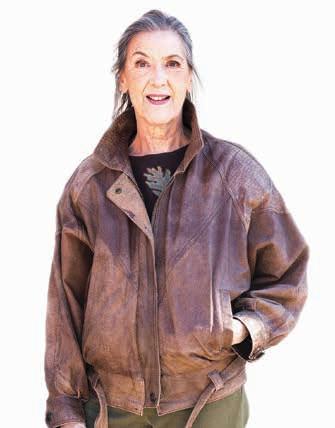
fishery, raped Indigenous women and seemed eager to wage a bloody war.
The invasion of foreigners into their territory led the Nlaka’pamux to take up arms to defend themselves and their territory. The short, bloody Fraser Canyon War, which included miners killing every man, woman and child in some villages, ended with a brokered truce.
About a week later, Governor Douglas arrived in the Fraser Canyon with 35 red-jacketed Royal Engineers and a handful of militiamen to keep the peace and assert British sovereignty.
Some of the locations cited in the old journals can no longer be pinpointed. The old trails to a resting place known as Manson’s Camp were obliterated by logging roads, while the site of the original camp can no longer be placed after the area was logged.
Yet, remnants remain of those bold adventurers who once wandered through the wilderness. In 1971, some hikers decided to follow an old trail on Manson’s Mountain. Walking from east to west, they spotted the slashed bark of deep, century-old blazes, the mark easily visible though bark was growing back over the damaged, grey core wood.
Other evidence remains more visible and easily visited, including the Fort Langley National Historic Site. On Government Street in Victoria, you can look down on the sidewalk to see a brick outline showing the borders of Fort Victoria.
Once the trails were established, those with local knowledge of the backcountry began to lead pack trains. This task was taken up by former Royal Engineers; by Mexicans from the California gold fields who brought with them hardy mules; by Chinese storekeepers; and by Nora Yakumtikum, an Upper Similkameen woman who ran trains from Fort Hope to Kamloops. Perhaps the most famous packer was Jean Caux, known as Cataline, a Frenchman who gained nearly mythical status. He led his last pack train in 1912, dying a decade later. History is always closer than you think.
9781553807018
Tom Hawthorn’s most recent book is The Year Canadians Lost Their Minds and Found Their Country: The Centennial of 1967 (D&M, 2017).

This joyful book about nature sounds will transport readers up a magnificent mountain.
978-1-77164-742-7
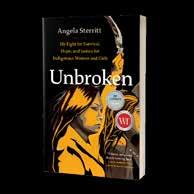
Angela Sterritt An award-winning journalist’s fight for Indigenous women and girls.
978-1-77840-214-2

Gaëlle Alméras The ultimate underwater adventure into ocean science and marine biology!
978-1-77840-208-1
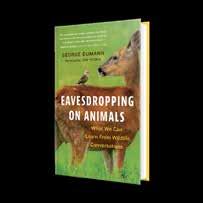
George Bumann Learn how to decode the secret conversations of wild animals all around you.
978-1-77840-020-9
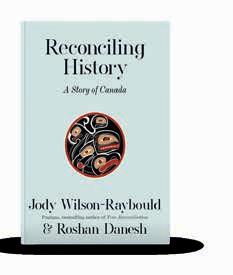
New books from BC and around the world

Candace Savage & Rachel Hudson Get up close and personal with a clever corvid and discover the fascinating world of crows.
978-1-77164-916-2

Jules Acton An unforgettable journey through the tangled roots of the oak tree.
978-1-77164-966-7
Find in the BC Ferries Gift Shop or Your Local Bookstore or at greystonebooks.com

Julie Flett A beautiful ode to the animals and humans we share our world with
978-1-77840-210-4

Rick McIntyre A unique window into the fascinating inner workings of wolf packs. Book Five in the Award-Winning “Alpha Wolves of Yellowstone” series. 978-1-77840-125-1
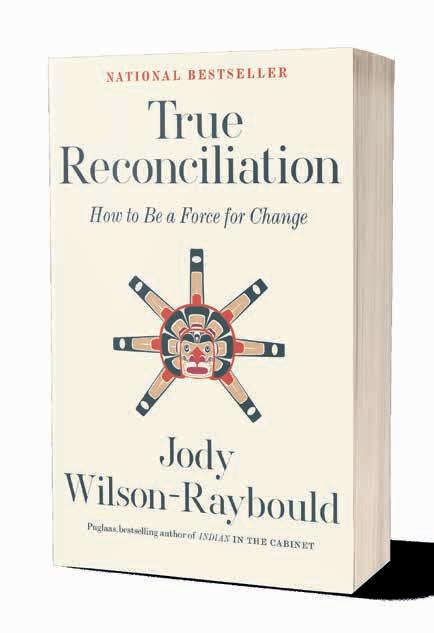
A fisherman tells salty tales about his fishboat work and life in a remote community.
BY GRAHAM CHANDLER
career in fishing is not for the faint of heart. Things we take for granted, like the privacy of a bathroom break, take on new meaning as Jon Taylor reveals in his humorous memoir.
“Some fishboats have a toilet,” he writes. “Some of these work, and some of them are used. I have also been on boats where the toilet didn’t work, but was used anyway. All boats have deck buckets, they are all used and they all work.”
It’s just part of life when you’re afloat for days on end aboard a troller or other fishing boat like a gillnetter or a seiner says Taylor who calls the seaside town of Sointula home.
According to its website, Sointula (population 576), on Malcolm Island off the northeast coast of Vancouver Island, means “place of harmony” in Finnish. It was established in 1901 when a colony of Finnish settlers arrived with utopian dreams of building the perfect community. Taylor writes that his own ancestors came in 1916 attracted by that dream. But “when they saw what this place looked like, they didn’t even get off the boat. They booked passage to Cuba. None of us came back until 1976.”
That was the year Taylor returned to Sointula, and he’s still there. Now largely retired, he writes about his love of the fishboat life on Malcolm Island. It comes through in spades in his down-to-earth prose in Fried Eggs and Fish Scales
For example, when a massive school of sockeye is detected, word gets out almost instantly and every troller wants a lucrative piece of the action. Taylor’s description of what’s known as a “circle” is vivid:
“Imagine a hundred trollers, each dragging at least a hundred lures, packed so tightly together that they are only a few feet apart. The bow of each boat is right up between the lines of the boat ahead, and the tips of the trolling poles of the boats on either side are barely feet apart. Now

add vast numbers of fish, and levels of testosterone, adrenalin, and rude machismo that no football game could match. There’s a fortune in the water, a gold rush—and it’s all in one place. It’s a feeding frenzy.”
You can learn a good deal about commercial fishing and its lifestyle from this book. Taylor provides a glossary at the end in case you’re unfamiliar. It includes a description of fishing vessel types from trollers to gillnetters along with their roles and crew types. And, oh yes, beer-drinking techniques when you’re under way.
“Beer is, of course, usually kept in the fish hold because it is cold and rolls about less down there,” he writes.
“Although there is usually a small access hatch to facilitate getting into the hold, it is by nature an unpleasant place (wet, cold, and slimy) and it is only natural to avoid entering it if possible. The wise fisherman always leaves a few cans or bottles directly below the access hatch, where they will be within easy reach of the gaff.” However, Taylor writes, this calls for a steady hand.
“First of all, the can or bottle may slip and fall back into the hatch, thus rendering it unfit to open for some time. Or secondly, you may accidentally pierce the can and have to drink the fine spray coming out the side. A true aficionado, drinking from cans, catches the pull-tab with the point of his gaff and then, with a deft flick of his wrist, opens the can without having touched it with his hand. The finest practitioner of this art that I have ever had the honour to see in action could tip his head full back to drain the last drop from a can, while at the same time opening the hatch with one foot and gaffing a fresh beer, seemingly by instinct—sight unseen!”
The text is peppered with talk like “I’ll give her a little tickle and you can hug my pigs.” Which, he says, is trollerspeak for “I’ll speed up a little and you can slip in close behind me.” Now if the fellow slipping in were to actually kiss your pigs, well that would of course
cause problems, he writes. Touching isn’t allowed.
Taylor writes in a fun, folksy style; you feel you’re sitting with him on the deck of a troller, or over a pint at Sointula’s Whale’s Rub Pub. But don’t show up too late: the pub closes at 8:00 p,m., which hints at the quietness of the town.
There’s lots of useful tips for getting the most enjoyment out of life—at least from some points of view—like minting your own philosophies. “I’m old enough now to think I understand yesterday,” he writes. “Tomorrow has always been a great blazing hope full of every promise there could ever be. But today—that one’s got me stumped.”
If you don’t have an opportunity to ride along on the fishboats, read this book—it feels like the same experience. 9781990776656
Vancouver-based freelance writer Graham Chandler has published more than 700 stories worldwide over the past 25 years. He enjoys the West Coast lifestyle.



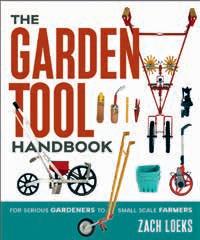




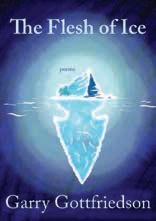



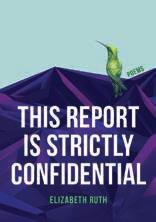




Less a re-telling or transposition of Nathaniel Hawthorne’s classic than a re-purposing of the materials to tell a different version, Hester In Sunlight is a heady and stimulating riff on contemporary motherhood and parenting.
978-1-55420-210-2 : : $19 : : OCTOBER


newstarbooks.vancouver newstarbooks


978-1-55420-212-6 : : $18 : : SEPTEMBER

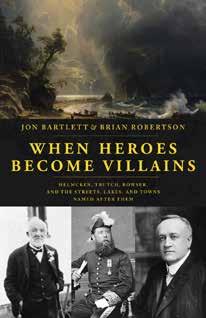

Reckoning, reconciliation, and reflection are changing our landscapes. In When Heroes Become Villains, Jon Bartlett and Brian Robertson bring home the “naming” controversy, telling the stories of three erstwhile heroes of British Columbia: John Sebastian Helmcken, Joseph Trutch, William Bowser.
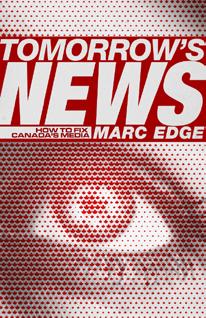

Canada’s news is a mess. Many see this crisis of the fourth estate as an existential threat to a bedrock of democratic decisionmaking. In Tomorrow’s News, Marc Edge lays out some of the new forms of journalism that are emerging in the post-print, digital-first world.
978-1-55420-214-0 : : $21 : : NOVEMBER


The History, Cultures, and Communities of Vancouver, on Foot bill arnott
e stories of Vancouver and its communities as experienced on various strolls through the city.
“As a lifelong Vancouverite, I love this book.” —Grant Lawrence 978-1-55152-963-9
corinna chong
A slow-burning novel that explores the generational e ects of repression and transgression.
“A powerful and disturbing exploration of kinship and obligation.” —Suzette Mayr 978-1-55152-959-2

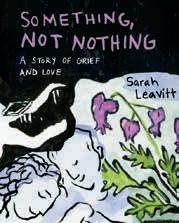
Selected Dispatches 1999-2022 stephen osborne
From the heart of the city to the edges of the Arctic: a brilliant and observant essay collection by a modern aneur. “Rigorous and rewarding. Osborne is a maestro of the sentence.” —Anakana Sco eld 978-1-55152-965-3
sarah leavitt
A poignant and beautifully illustrated graphic memoir about love and loss. “Leavitt has made a memoir of heartbreaking wonder.” —Canisia Lubrin
978-1-55152-951-6
BY BEVERLY CRAMP
BookWorld: Why did you enter the profession of journalism?
Christopher Cheung: I grew up in a neighbourhood called Oakridge, right in the middle of Vancouver, which was kind of a poster example of Canadian diversity. Vancouver has its reputation of being a multicultural city, but my neighbourhood was even more multicultural than the city on average. My classmates had roots from all over the world and one of the ways I got to experience that diversity was from the recess snacks! One friend would share Japanese dried seaweed and another would bring Iranian fruit leather from his dad’s grocery. As I got older, I noticed the class and family diversity too. Some had big families who owned more than one house in the neighbourhood, while others rented old apartments with one parent. I was never interested in the news because I didn’t find that the coverage reflected these worlds that I knew growing up. Even when I decided to become a journalist later, I wasn’t trying to achieve anything big. I just personally wanted to see stories that told me about people I shared the city with: what’s important to them, what their lives are like, what struggles they face and why.
BW: What is “the white gaze?”
CC: A white gaze is a white point of view that shapes depictions of a subject. Whiteness may be presented as normal while everything else is presented as the other: as abnormal, as exotic, as lesser. Toni Morrison had a great way of describing the white gaze. She called it “a little figure that sits on your shoulder and checks out everything you do or say.”
Journalism might be a collection of facts and not fiction, but it’s important to ask how those facts are presented and from whose point of view. What stories are told about people of colour? How are those people presented? Who is the intended audience, and how is the story being shaped for them? Who decides which stories are worth telling? What stories aren’t being told?
BW: What are the difficulties of reporting stories about non-white subjects?
CC: Because racial representation was so lacking, I’d be happy whenever I wrote stories that featured non-white characters without much thought into how they were being presented. I wrote lots of happy stories about “model minorities” who were able to assimilate. I introduced non-European cultures to audiences in an exotic way, everything from food to religions. Aside from story tropes, this applied to language too. I would refer to European cultures as “Canadian,” but not others, and I think
hristopher Cheung spent his childhood in a multicultural neighbourhood in Vancouver that wasn’t reflected in the local news. Cheung later became a journalist and, after ten years working in the field, has written Under the White Gaze: Solving the Problem of Race and Representation in Canadian Journalism (UBC Press/Purich $24.95). Here, Cheung presents some of his experiences in an exclusive BC BookWorld interview.

this subliminally tells audiences there are only certain ways to be Canadian. My stories were popular reads, but they were not very complex. They didn’t cover the wide diversity of experiences of people of colour.
It would’ve been great if I had a nonwhite editor aware of racial issues to help me craft my stories. But working in journalism for over a decade now, I’ve only ever had one editor of colour editing my stories about people of colour. I think it helps to have someone who knows what it’s like to be “othered” to check whether my stories are othering a group.
BW: What are examples of being treated as a token diversity journalist or as the only non-white person in a group, “the missing yellow crayon among a carefully chosen rainbow” as you describe it in your book.
CC: There have been times when I’ve been offered work to cover certain “Asian” topics or to use my Cantonese language ability and appearance as a Chinese person. Yes, it’s true that I often write about East Asian people, and yes, I have used Cantonese in my reporting. But it’s awkward when those seeking me out try to force a story angle about “Asians” that I don’t agree with,
insist that I should cover this “Asian” thing even though I tell them it’s something I have no experience or interest in, or want me to help them get that “Asian” access because of who I am. It’s even more awkward when during our conversation they make it apparent that they’ve never read any of my reporting and are unfamiliar with my specialities as a reporter—they only wanted me as a means to an end. It gets complicated if that ask is coming from an outlet with a big audience. Even if the story is tokenizing, do I accept the assignment if I feel like the coverage can do some good in the world?
BW: What meaningful improvements, if any, have Canadian newsrooms made toward serving diversity rather than mainly white audiences?
CC: It’s not enough to simply hire journalists of colour and hope representation in the coverage will follow after that. There are some great fellowships and mentorship programs out there directly catered to journalists of colour, and this is important because surveys tell us that they are underrepresented in the industry. Once they are hired, let them cook! I’ve heard of too many white managers telling their racialized journalists what they think the important stories of race are. Having a diverse management is also important, to introduce a variety of lived experiences among the leadership who determine the news of the day.
Beyond hires, the best reporters consider the diversity of their respective beats, from dimensions like race, class, to gender, and so on. It’s as simple as that. It doesn’t matter whether a reporter is covering labour or politics or the environment. Those who pay attention to these dimensions come out with the richest stories.
BW: What problems are still hampering diverse coverage in Canadian journalism?
CC: I think the biggest problem when it comes to diversity in Canadian journalism is the idea that there isn’t a problem.
BW: What do you hope readers get from Under The White Gaze?
CC: I know this book has a title that might be considered provocative, but it’s really calling for something that really shouldn’t be provocative: that journalism in Canada should be for everyone in Canada. It just so happens with our history of European colonization, the point of view that has persisted is a white one. I hope that the book will get journalists and audiences asking those tough questions about how the news is produced. 9780774881111
This interview has been edited for space.

The Raven Chapbooks Poetry Contest is open to all emerging and established poets living in B.C. Full description and contest guidelines available on the website: ravenchapbooks.ca
We are pleased to announce the 2025 contest judges, Arleen Paré and John Barton.
Entries must be received by November 30, 2024. Manuscripts are blind judged. The winner will be announced March 1 and published June 2025.
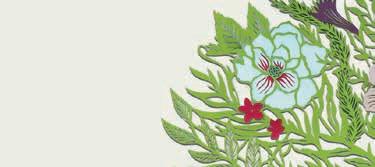
Steven Earle
examines a past geological episode to understand the dangers of a runaway climate— and what we need to do about it.


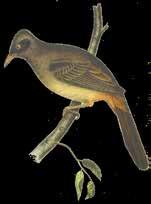
Runaway Climate: What the Geological Past Can Tell Us about the Coming Climate Change Catastrophe by Steven Earle (New Society $24.99)
BY GRAHAM CHANDLER
t least 70,000 publications relating to climate change were released in 2022 according to Nature magazine.
And like the topic of Steven Earle ’s clever book, Runaway Climate, that figure is growing exponentially. Climate change has clearly become a hot topic.
How to sort through all the evidence? There’s so much of it out there now that a special international conference of top climate researchers was held in Berlin earlier this year to address that very question. Called “What Works: Climate Solutions Summit,” its aim was to synthesize the mountains of evidence to arrive at what is of topmost importance today.
But until the Summit’s results are summarized and released, how do we, as concerned citizens, filter through what’s important to know and understand about climate change? As well, what can we be doing in the meantime? An excellent starter is to read this book by Earle, a sciences lecturer.
To help understand the causes of our present global warming threat,
Earle’s Runaway Climate uses an analogy: a geological episode called the Paleocene-Eocene Thermal Maximum (PETM), a rapid climate-heating episode from the past, its dramatic impact on life on Earth and lessons for our climate future.
The analogy is meaningful. Although the PETM happened 56 million years ago, Earth experienced a period of intense warming during this era resulting in a rapid global temperature increase of about 7°C. Triggered by natural geological processes over thousands of years, and magnified by strong climate feedback loops, the PETM lasted for about 200,000 years and drastically altered life on Earth. And here’s the rub: “Yet in only a few short decades we’ve pumped similar amounts of greenhouse gases into the atmosphere, making the PETM an unsettlingly apt analogy for our current predicament,” Earle writes. Runaway Climate is conveniently and logically split into two parts: what happened in the past; and where we are heading if we don’t change course. Much of the first part will be entertaining to younger kids while maintaining scientific accuracy. For example, can you imagine the delight of a six-yearold when they read of a housecat-sized horse, called the Sifrhippus, trotting about at the end of the PETM? Interested grown-ups will appreciate things like the eminently readable explanations of geological timescales and processes. The book’s second part speaks not only of where we are heading if we don’t




“We got ourselves into this mess, and we can get ourselves out. The consequences of not doing so are frightening. There isn’t much time.” —STEVEN EARLE
“We got ourselves into this mess, and we can get ourselves out. The consequences of not doing so are frightening. There isn’t much time.” —STEVEN EARLE
change course, but ventures beyond that. Therein lies its central usefulness. Earle discusses the causes of the PETM which include volcanism, orbital cycles, extraterrestrial sources, carbon sources and methane gas releases. And critically, Earle describes how it could happen again if we don’t smarten up.
“The changes that we know are coming over the next several decades will have dramatic implications for how we live on this planet… if we do not take decisive action to reduce our climate impacts over the next decade, then it is possible that the changes we have caused will tip us into a PETMlike runaway climate early in the next century,” writes Earle. He paints a dire, almost unliveable picture should that happen—including a dramatic drop in world population due to extensive agricultural land losses.
However, he continues, “if we can make a sufficiently sharp reduction in our emissions, one that restricts temperature rise to 2 oC above preindustrial levels, it may be possible to avoid the strong feedbacks that could push us over the edge into a PETMlike world.”
Chapters follow a logical order and have understandable, clear introduc
tions and ending summaries. Earle conveniently rounds out the volume with useful endnotes, appendices and copious scientific sources.
Appropriately, the final chapter is titled What Do We Need to Do? Here’s where readers might breathe more easily, depending on their willingness to act. It’s not too late, reckons Earle. But we need to do something, and “we need to do it now. Not soon. Now!” he writes. In this chapter he provides a comprehensive discussion on actions each of us can be taking, ranging from making “quick decisions to modify our lives in ways that will have immediate effect” to electing governments “that are genuinely open to actually taking action on climate change.”
Don’t know where to start? No problem. Runaway Climate closes with a handy “quick and dirty calculation” chart to estimate your personal carbon footprint for a year and how you can reduce it.
So read this book. And get busy on your actions. Now.
9780865719897


















The passionate,
dedicated
voices of early conservationists from BC’s islands in the Salish Sea recount how they created new ways to save delicate ecosystems.
This big, beautiful book by Sheila Harrington—longtime environmental advocate, writer, photographer, sailor—is one of those publishing labours of love, a gathering of passionate, dedicated voices. Within these pages kindred spirits speak about their history as community activists establishing nature conservancies, and also about how they are connected to the Islands Trust (established in 1974 to protect the nature and amenities of 13 major islands and more than 450 smaller islands in BC’s Salish Sea).
This government enacted the Islands Trust Act in 1974 hard on the heels of creating the Agricultural Land Reserve in 1973.
BY CAROLINE WOODWARD
when several of sheila harrington’s most cherished elder mentors died, she realized she had to listen to the voices of many individual islanders who contributed to protecting public and private lands, and who learned how to work effectively with many other individuals as well as corporate and governmental entities.
Harrington takes us along with her as she sails between 13 of the larger islands among the 470 islands in the Salish Sea to interview about fifty stalwart movers and shakers in the conservation movement. As Briony Penn says, hailing the author in her eloquent foreword, “She is one of those volunteers who will sit through years of meetings until all other options are exhausted. Then watch out.”
When the right author, a person with immense credibility, takes on a communal history project like this, the resulting book resonates with a great many other readers, no matter where they might live in BC or far beyond our Canadian borders. With her service as the founding executive director of the Land Trust Alliance of BC (1997-2011) and as a current director of the Lasqueti Island Nature Conservancy for the past 12 years, Sheila Harrington has, thanks to decades of collaboration and communication, island connections aplenty. She was also the spark plug and lead writer for two books which are valuable contributions to bioregional history: Giving the Land a Voice: Mapping Our Home Places (Harrington et al.: a Salt Spring Island-based community publishing project, 1995) and Islands in the Salish Sea: A Community Atlas (Harrington with Judi Stevenson: TouchWood Editions, 2005).
In the mid-70s, issues and phrases like meaningful reconciliation with First Nations, climate change mitigation and carbon sinks were household words in very few households indeed. It is hard to fathom how different British Columbia would look if this political vision had not been implemented then. Each Act was structured with a different decision-making framework to create more democratic involvement by the people who were most affected by major land use decisions. The demands of stepping up to participate were not meant for fly-by-night kvetchers. As a decision-making body, Islands Trust representatives are much more accessible for fellow islanders than far-flung Regional Districts or unelected ever-changing bureaucrats in provincial ministry corridors—and bear in mind there is no Ministry of Islands.
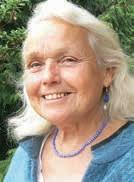
Speaking of which, the islanders interviewed in this book are from Gabriola, Thetis, Salt Spring, North and South Pender, Saturna, Mayne, Galiano, Denman, Hornby, Quadra, Cortes, Savary, Gambier, Bowen, Valdes, Keats and Lasqueti. As trustee Bob Turner of Bowen Island says, “Island life just has a different pacing and value system than a lot of what I see on the mainland, and everywhere. I think there’s a wisdom embedded in island communities that is valuable to the wider world.”
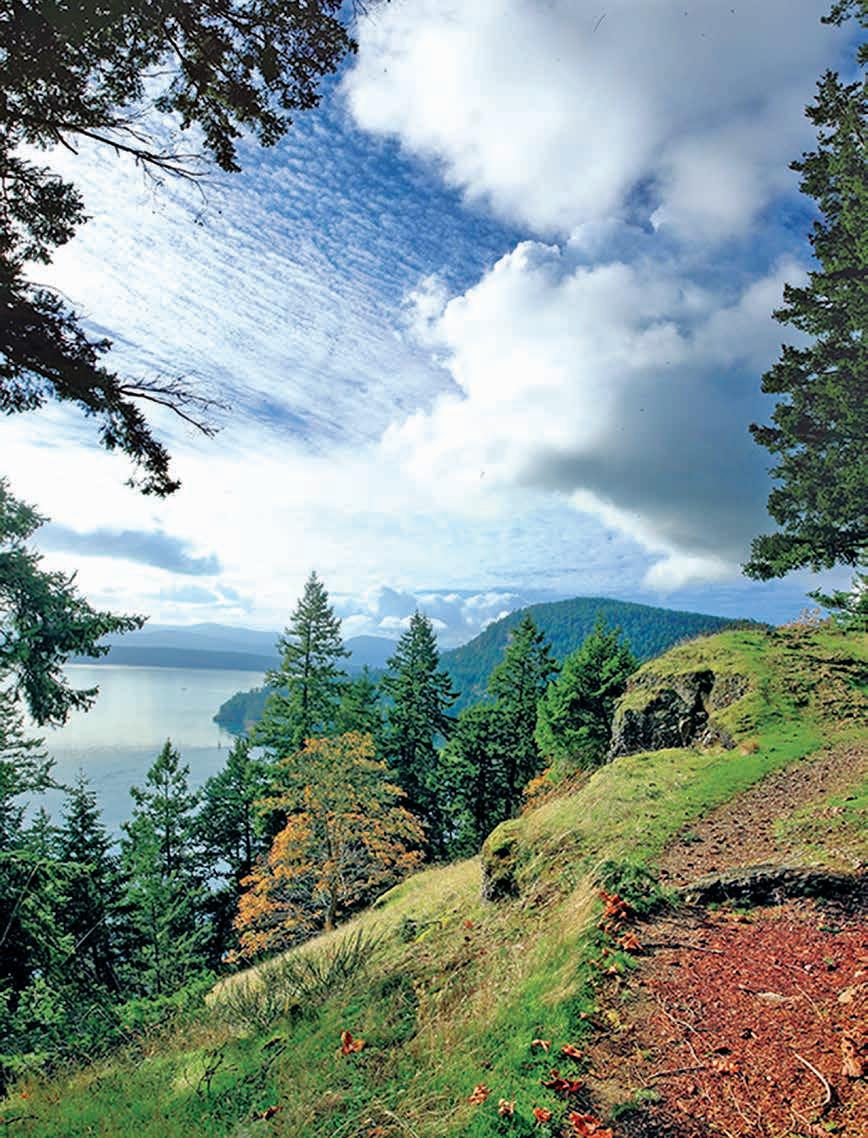
who works with the Thetis Island Nature Conservancy: “Taking action with others is an antidote to climate and environmental grief,” she says.
Back when this account of conservation efforts on the islands began, the provincial government of the day, unnamed in the book but for the sake of historical accuracy and credit where credit is due, was an NDP government with then-Premier Dave Barrett at the helm.
The other good thing is that there were and are more experienced and accomplished people to choose as trustees on these islands with high-calibre backgrounds in all levels of government administration (especially Parks) and professional research expertise in subjects like botany, marine creatures and children’s outdoor education to name but a few. These are wise people, many of them retirees and grandparents, who have the time and the dedication. They are more than capable of working well with others in different roles and respecting the nuances of process in order to complete difficult tasks which may take years to resolve. And working with like-minded conservationists has other, benefits, too according to Ann Eriksson,
Voices for the Islands is so smartly designed with handy inset boxes containing succinct factual information. You will learn about the many different conservancy and land trust groups established to protect these 17 islands, not to mention how to make private land transfers, how covenants actually work and who to ask for help so you can benefit from a charitable tax break by making an “ecological gift.” There are invaluable maps, a glossary of conservancy movement acronyms, an index, a helpful reading list and many beautiful photographs.
In a nutshell, this book is an inspiring account of democracy and decentralization in action since 1974. The governance structure of the Islands Trust is unique in the entire world. There is an implicit understanding that every island has its own specific features valued highly by local people. There are many interesting ac-
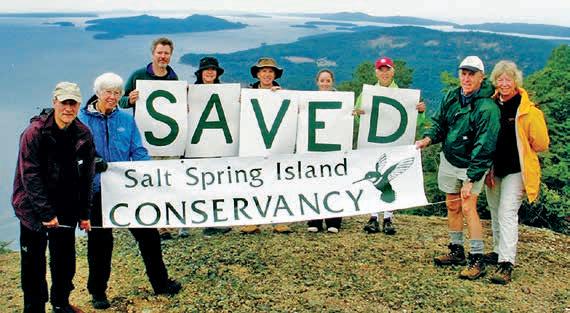




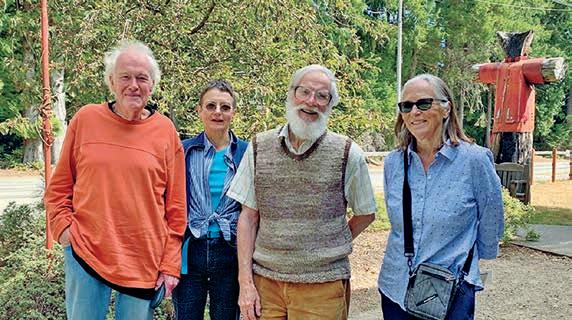
counts of swapping lands between community groups and logging companies and developers, and of ingenious fundraising efforts to buy a special site which contained fairy slipper orchids (Thetis Island), to create trails to provide shore access in over a hundred places (Gabriola Island) or to purchase properties in order to protect freshwater lakes upon which islanders depend for drinking water (Salt Spring Island). Then we read the account of how lawyer Jack Woodward (no relation to the historical department store family) working for the Salt Spring Island Water Preservation Society took the precedent-setting issue of protecting potable water source lakes from boat fuel all the way to the Supreme Court of Canada, which is how electric boat motors became the clean solution for boaters on hundreds of Canadian lakes.
The fundraising stories alone will have you believing in Fairy Godpersons as well as a few Greedy Grinches among us. There are dozens of inspiring accounts of how one small group of islanders with a passion to protect a certain beautiful place from “strip and flip” development connected with allies to protect and preserve all kinds of land, from marshes to meadows to rocky cliffs, heavily forested, deforested, abandoned orchards or covered with invasive species. These stories are a marvel of creative problem-solving
and high-energy action driven, often, by 11th hour desperation.
We read about many legacies: the apothecary gardens, native plant depots, a whale symposium on Saturna Island which led to greater awareness of shipping channels and ethical whale-watching rules, wheelchair-accessible trails and new moorage systems for boats that don’t wreck the eelgrass beds on the sea floor. First Nations are reclaiming sea gardens and fish traps and sharing that knowledge. Salmonbearing streams trashed by poor logging practices have been brought back to life. This book celebrates all the ways individuals and groups, from Girl Guides to Streamkeepers, have contributed to saving other species from us and to affirming the best qualities of being human at the same time.
As Lorne Wilkinson of Galiano says: “The Penelakut people told me that they don’t see these as ‘islands.’ Rather they see them as shorelines, with the ocean as the highway. I see it all as a Gift.”
9781772034929
Retired lightkeeper of Lennard Island Lighthouse (2008 – 2022) and author of nine books, Caroline Woodward recently launched the kidlit title, Have You Ever Heard a Whale Exhale? (Pownal Street Press $24.95).


Oana Avasilichioaei
A collection of poems, essays, performance scores, and audio recordings, Chambersonic thematically and formally reflects on the practice of soundmaking, combining poetic and experimental music techniques in ways that will appeal to readers and listeners alike.
Forthcoming September 17, 2024
Mercedes Eng
With an eye trained on justice, cop city swagger presents a panoramic media montage of structural wrongdoing, working to map a system that is always moving and always obfuscating.
Forthcoming September 10, 2024
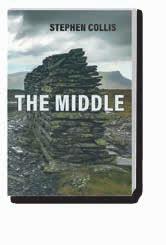
Stephen Collis

Written in the midst of wildfires and atmospheric rivers, The Middle extends award-winning poet Stephen Collis’s investigation of threatened climate futures into a poetics of displacement and wandering.
Forthcoming October 15, 2024
A Jamali Rad
A Jamali Rad’s No Signal No Noise is a playful poetic hybrid, sitting somewhere between philosophical treatise and experimental novel.
Forthcoming September 25, 2024


Mr. Good-Evening: A Mystery
by John MacLachlan Gray
(D&M $34.95)
BY CAROLINE WOODWARD
Here is a rich brew of a novel set in late 1920’s Vancouver, mere months before the October 1929 Wall Street Crash which reverberated around the globe. The third in his celebrated Raincoast Noir trilogy of historical mysteries beginning with The White Angel (D&M, 2017) and Vile Spirits (D&M, 2021), this one is also fine as a standalone read. John MacLachlan Gray spices this novel with nuggets of sage wisdom from Al Capone and lurid newspaper headlines following the case of The Fatal Flapper. As we’d expect from the playwright and musical composer best known for Billy Bishop Goes to War (Talon, 1982), his tour de force collaboration with actor Eric Peterson, this work is peppered with dialogue true to the Roaring Twenties era. Yet, strangely, this book feels contemporary at times.
The Vancouver Stock Exchange is portrayed as a steaming heap of money-laundering corruption, the Vancouver police force has good cops like Calvin Hook, cursed with a toothache in this book, and bad cops, some of whom float to the upper echelons of management and with whom Hook has to play his cards carefully. The craftiness of claiming credit for successful outcomes one had little to do with, and blaming botch-ups on those lower echelon stalwarts who actually do the legwork is deftly portrayed.
Women are judged by the clothing (and shoes) they wear. Happily for readers (and most helpfully for Detective Hook), the stylish eavesdropping telegraph operator Mildred Wickstram is back, this time as the landlady of a boarding house for professional women like Dora Decker, a receptionist from Rosthern, Saskatchewan. Both women are in big trouble, to put it mildly, but I will not spoil the whys and wherefores by spelling out their dire straits. This
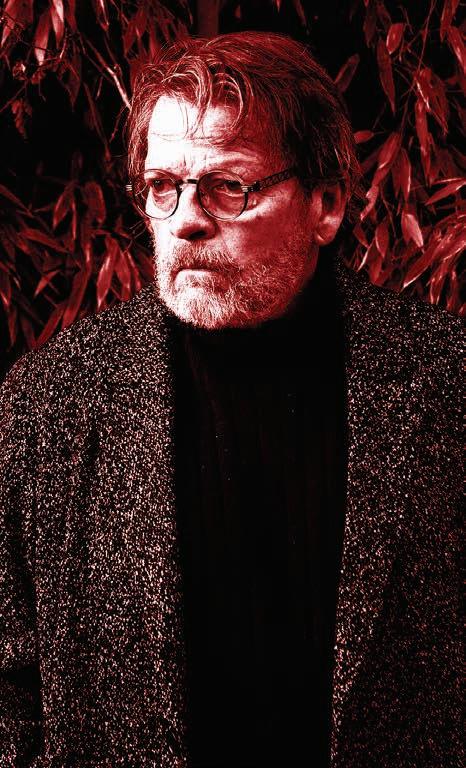
A mystery with big money , corruption , hit men , charlatans , the Ku Klux Klan , and flappers with four-inch heels.
being a time of overt racism, people of colour, Asian and Black in particular, are often viewed as “useful functionaries” in the work force. A few are admired as musicians, especially those in the popular blues clubs of Hogan’s Alley (Vancouver’s historical Black neighbourhood, now long gone). But mostly they are feared as untrustworthy aliens by the ruling Anglo elite network. There are exceptions, and allies form bonds across class, colour and gender lines. A particularly well-depicted friendship in MacLachlan Gray’s story is portrayed between the recurring character of journalist Ed McCurdy and George Paris, a black waiter in the exclusive Quadra Club, who is an off-hours musician and former boxer.
As in the two previous novels in this
trilogy, the Ku Klux Klan has oozed over the border and is a malignant influence in conservative politics. Then, as now, criminal gangs fight over territory to profit from the distribution of drugs while a particularly heinous hitman lurches down the streets of the city. There were, and still are, brothels aplenty (massage parlours in the 1920s versus the internet escort services of today) and city councils don’t know whether to attempt to ban them, or just their customers, or to license them and tax as independent business operators.
The role of newspaper reporters like Ed McCurdy, and the risks they take to find and verify credible information from underworld informants, is as relevant now as ever. The impact of talking movies and telegraph lines as well as
the rise of radio technology by the late 1920s is explored, from the writing of non-sequitur evening dispatches to the reading of them over the airwaves into over 50,000 Canadian living rooms. Just as Lorne Greene was heard as the Voice of Doom in the Second World War, our nearly-blind protagonist, McCurdy, possesses a resonant baritone and his alter ego becomes loved or loathed by the nickname, Mr. GoodEvening.
Oh, and this is BC, so there’s a cult to which the author acknowledges the research and writing by BC author John Oliphant of Brother XII: The Strange Odyssey of a 20thCentury Prophet and His Quest for a New World (Twelfth House, 2016). This particular cult on DeCourcey Island near Nanaimo is led by a charismatic little man supported by a ferociously devoted alpha female with a whip, who is obedient but not inclined to actually beat the acolytes. These two prey on gullible, well-heeled people, mostly from America, who have survived the Great War, fled the first and second rounds of the Spanish flu and are waiting for their in-house messiah to lead the way. Former lawyers and business magnates get busy digging gardens and building rustic shelters in the rainforest. A former accountant from Los Angeles is trusted to keep the books, which led me to recall what eventually caused the downfall of Al Capone as I raced through the pages of this grimly hilarious account.
There’s big money, corruption, cops, robbers, hit men, flappers with four-inch heels, charlatans, shrewd observations from trusted sources and, oh yes, Winston Churchill, who plays a pitch-perfect cameo role (Churchill did actually come to the West Coast in 1929 on a reading tour). With its mix of fictional characters and real-life historical figures, this murder mystery is a great read, highly recommended.
9781771623957
Have You Ever Heard A Whale Exhale? (Pownal Street Press/Raincoast Books) is Caroline Woodward’s tenth book, her fourth book for children.



Susan Juby’s murder mystery series introduces Helen Thorpe, an ex-Buddhist nun turned professional butler and detective.
BY JOHN MOORE
The words “The butler did it” became a running joke in murder mystery novels and films after Mary Roberts Rinehart ’s 1930 novel, The Door, shocked readers by having the efficient self-effacing butler turn out to be the killer. It was a new and shockingly democratic twist in a genre where main characters were almost always members of the upper classes with a few servants playing minor roles.
Vancouver Island’s Susan Juby puts a fresh spin on the old joke by making the butler the investigator who solves the crime. In her first mystery novel, Mindful of Murder (HarperCollins, 2022), Juby introduced Helen Thorpe, a former Buddhist nun turned professional butler, whose experience and training enhances her powers of observation while giving her the ability to remain calm and compassionate as everyone around her is losing their marbles and someone is resorting to murder to achieve questionable “life goals.”
In Mindful of Murder the suspects are potential beneficiaries of the will of a wealthy woman who devoted her life to creating a centre for “spiritual
renewal” on one of the salubrious Gulf Islands. The centre’s teachings are a predictable New Age potpourri of yoga, meditation, expressive dance and flower arranging, which would-be beneficiaries are required to undergo in hopes of getting control of the centre’s valuable real estate or the owner’s considerable fortune. Since they’re a typical bunch of mostly dissolute parasites, second-gen, wannabe rich with more entitlement than money, it’s a sendup of the traditional “reading of the will” scene.
Since only the rich can afford butlers, Juby’s follow-up, A Meditation on Murder, is also inevitably set in a world of “haves” and “have-nots.” Insulated by privilege and expensive lawyers, the world of the rich has been the hunting ground of fictional private detectives and amateur sleuths since Sherlock Holmes was cranking a seven-per-cent solution of cocaine in his flat on Baker Street. The poor almost always kill out of desperation, as in Dostoyevsky’s Crime and Punishment. The homicidal rich are usually motivated by money and power and the desire for more of both, which makes them more complex and more interesting.
In A Meditation on Murder, the cast of suspects is the most repellent variant yet to evolve from homo sapiens: the social media influencer Content in her current position with the Levines, a kindly philanthropic Vancouver couple, Helen is asked by her clients to help one of their friends, widowed

Susan Juby won the Leacock Medal for Humour in 2016 and has been nominated for an Edgar Award by the Mystery Writers of

shipping magnate Archie Hightower. Hightower is a bully who gets things done by shouting at people, including his motherless daughter Cartier.
Trying to invent herself, Cartier has hooked up with a creepy gang of influencers calling themselves Deep State. They stage raves, conceptual art happenings, dabble in fashion and perform dangerous stunts, all videoed and posted on their media platforms. They spend almost every waking moment looking at their phones. Trying to assist Cartier to lead a less disordered life, Helen is almost out of her depth, confronted by such a digitally fabricated lifestyle.
When members of the Deep State start dying for real and “anti-social” media turns its demonizing power against Cartier, who possesses no personal resources to defend herself, Helen is forced to take action to protect the frightened lost child inside a shallow and superficially ungrateful young woman. Spiriting Cartier away to an isolated Chilcotin ranch cut off from internet service, Helen provokes a confrontation that exposes the person most likely to profit from the death of Deep State. As ancient Roman lawyers asked in murder cases, cui bono? Who benefits? Or, as we say these days, “follow the money.”
Mystery lovers may note that the plots of both Juby’s first two Helen Thorpe novels are resolved during cathartic storms. It may be a tonguein-cheek nod to the Gospel of St. Ag-

atha: nothing isolates and heightens dramatic tension among a group of suspects like a whopping great storm that reflects the emotional turmoil of the characters, especially when it disempowers them by having the lights and their electronic gadgets abandon them in primal darkness. It’s an old reliable dramatic device.
Susan Juby’s decision to write a series of murder mysteries about a butler may seem a tad quirky for the author of a dozen popular novels for young and adult readers and a Leacock Medal for Humour winner. Not so much. Sales of mainstream literary novels have been dropping off like a blind date’s interest for decades while readers of once-deprecated genre fiction, especially young adult novels and murder/suspense thrillers still prefer a good book to Netflix. Authors as disparate as Juby and Jim Christy have recognized the enduring appeal of the murder mystery.
Murder mysteries offer as many opportunities for character creation, social criticism, ironic observation and humour as any form of fiction. Maybe more. Unlike mainstream novels that often wander off the trail into narrative bogs, mysteries demand a plot that, however tangled, has to be resolved before you get to write “The End.” In the old days, we called that a “story.”
9781443469524
John Moore reads and writes from Garibaldi Highlands.

ome civilizations have survived for long periods, others only a short time. Why the difference? Long-surviving civilizations had wise governance that controlled population numbers. Today we have two additional problems: we must increase equality in wealth, and mitigate the climate crisis. We need wiser governance to resolve all three problems.
This book and three young adult novels by the same author are available through Red Tuque Books: www.redtuquebooks.com
Suggested retail price $16.95
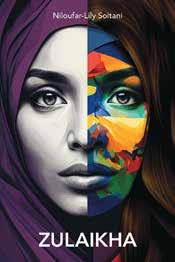
A sweeping novel shedding light on the tumultuous history of Iran and its impact on the lives of women.
“An often suspenseful and always emotionally striking account of the inescapable reach of a violent history, and the grip that political realities have over personal truths.”
Naben Ruthnum, author of Find You in The Dark and Your Life is Mine



An epic poem drawing on Norse mythology to contemplate how to act with integrity in a troubled world.
“Here be skyhorses and dragons, Fire-gods and Valkyries; here a new song animates the ancient legends.” —Rachel Rose, former Poet Laureate of Vancouver, author of Notes on Arrival and Departure



This memoir from Northern BC is the story of a young Indigenous woman grappling with losing her mother and grandmother within six months of each other. Bidding farewell to the key women who raised her, and also to the version of herself she once believed in, Helen Knott finds sobriety amidst sorrow. She writes about the dreams of generations of her ancestors with poetic reflections, humour and heartfelt moments. Ultimately, it’s the story of women who are able and capable of stepping up and demonstrating leadership using ancestral, traditional wisdom.
Wildlife biologist Wayne McCrory leverages two decades of research to advocate for the recognition of Chilcotin wild horses, known as “qiyus” in traditional Tŝilhqot’in culture, as integral to the region’s balanced prey-predator ecosystem. McCrory also delves into the genetic history of the Chilcotin wild horses and their significance to the Tŝilhqot’in people, juxtaposing Indigenous conservation efforts with government movements aimed at culling them. His emotional account describes a wildlife issue few know about, with deep links to the Indigenous roots of these threatened animals.
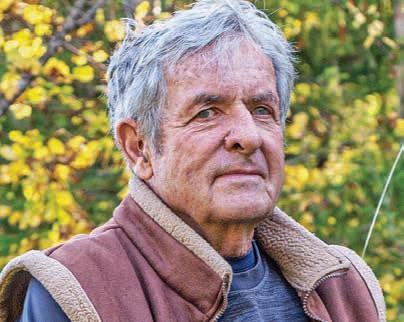
FINALISTS
Doppelganger: A Trip into the Mirror World (Knopf Canada) by Naomi Klein
Fire Weather: The Making of a Beast (Knopf Canada) by John Vaillant
It Stops Here: Standing Up for Our Lands, Our Waters and Our People (Allen Lane/Penguin Canada) by Rueben George with Michael Simpson
JAJ: A Haida Manga (Douglas & McIntyre) by Michael Nicoll Yahgulanaas
Judges for the George Ryga Award were author and poet Trevor Carolan, retired librarian Jane Curry and BC BookWorld publisher Beverly Cramp.
With the sponsorship of Yosef Wosk, VPL and Pacific BookWorld News Society, the annual George Ryga Award is given to a BC writer who has achieved an outstanding degree of social awareness in a new book published in the preceding calendar year.


BY CARELLIN BROOKS
Lives transformed by chance are a staple plot in movies and novels. The appeal is clear. How much of who we are and what we do is determined by simple happenstance? I know a man who has a successful career in shipping logistics. In his early adult years, he met a girlfriend’s father who was in the business. The father taught him the basics and the rest, as they say, is history. Many of us have similar stories. We met someone and learned something that led us to become the person we are today. But what if we hadn’t ever gone to that fateful meeting, met that particular person, made that choice? Who would we be then?
Myriam Lacroix’s collection of short stories, How It Works Out, takes this premise—how different we could be depending on our different circumstances—and runs with it. The two main characters of each version are lesbian couple Myriam, spelled like the author, and Allison, who live through various alternate lives in each story. We are in for a rollicking ride from the first whizbang of a sentence: “They’d planned on getting beer from Toby’s, but instead they got a baby, and they were not unhappy about it.”
Myriam and Allison’s misadventures range from silly to serious, starting with the first story, where they find not only the baby but the baby’s mom, eventually becoming a parenting trio. The looseness of the writing has something of a film caper feel to it, mixing violence, low comedy and improbable redemption in roughly equal doses.
Subsequent stories veer further into the unusual. In “Love Bun”, the lovers become cannibals, circumstantial at first, after they go skating and Allison accidentally severs a finger. The narrative voice here, in first person, doubles down on Myriam’s questionable choices. “When she talked like that I was reminded that she was a few years older than me, and it made me want to have sex with her,” says Myriam. Her desire may or may not be related to Myriam’s secretly harbouring Allison’s missing digit: “Allison’s finger

twithholds love unless her girlfriend joins her in wholeheartedly endorsing each supposed emergency. In the titular short story, the couple are evenly matched: jealously monitoring exes and evaluating friends, arguing on the sly. The children they bred in “Love Bun” for eventual consumption appear here as ghosts: “Moms! Moms!” “Her hand passed through me, but I felt the tug in my bones.”
Short stories that use magic realism to alter the circumstances of one couple’s life together—many times—to see what happens.
slipped into my palm the way it had countless times before, when it had been attached to her,” adds Myriam and then she consumes it on the sly behind a dumpster in the alley.
Magic realism never really went anywhere, but right now it is having a particular moment. Indigenous and lesbian authors, among other historically marginalized groups, have found that fantastical fiction offers tools for depicting racism, colonialism and

homophobia in playful ways. In one story, Allison is a faithful dog, Myriam a praying mantis, and their owner is their captor. In another, Myriam is lazy and deceitful—she knows Allison’s too good for her, but despite internal vows to become a better partner, she’s happy to slip back into dependence and let her girlfriend do it all. But wait: a few pages on, a different story, and Allison becomes the manipulator, a hypochondriac who
Part of the fun of this collection is the sheer pleasure of seeing what the author invents next. In one story, middle-aged influencers getting married to interest publishers in a sequel to their book about healthy lesbian relationships in patriarchal times, is also titled “How it Works Out.” That’s just one of the many “Easter egg” equivalents Lacroix gives to her characters. In another story, Myriam meets a doppelganger who looks, walks and talks just like departed Allison, except for being slightly blue-white in colour. Then the original Allison reappears. What’s a girl to do?
In the kinkiest of these stories, Myriam is the CEO of a company, and Allison the narrator and the CEO’s lowlevel peon who finds herself getting involved with a very rich woman very fast. The fantastical elements in these stories are grounded in the sorts of details any couple and any Vancouverite can recognize: “Allison and I like small dinner parties, but otherwise we just stay home and watch movies in bed, or play Boggle, or talk.” Or, take the instance where Allison leaves Myriam in “Love and the Dark” after a run to Norman’s Fruit and Salad store.
In the last story, an actor plays out the fateful scene where Allison loses a finger on the skating rink. “She should have been herself,” she thinks as the story ends, “whoever that was supposed to be.” Identity, in these stories, is constructed not so much by our will as by circumstance. It’s a sobering realization that all that we hold closest, how we define ourselves, is as provisional and fragile as that consequential decision to accept the role of the girlfriend in the movie, ignore an abusive Allison’s sudden rages, or take our very first bite of human flesh.
9780385698405
Carellin Brooks is the author of Learned (Book*hug Press) and four other books. She lives in Vancouver.
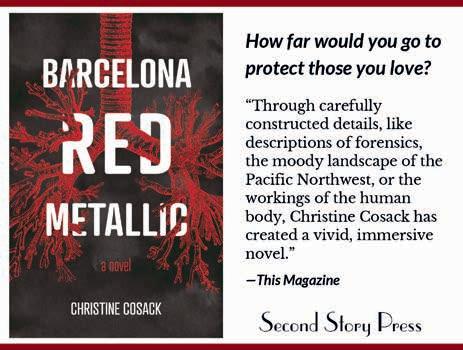

Part art monograph, part memoir, Joanne Thomson explores her family’s history through everyday objects.
$34.95 | OCTOBER
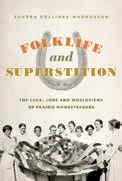

A striking coffee-table book celebrates diversity, innovation, and creativity—from every province and territory in Canada.
$42.95 | OCTOBER

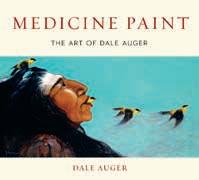
A stunning retrospective of the late Cree artist Dale Auger, featuring 150+ powerful and inspiring oil paintings.
$49.95 | OCTO BER The folk traditions, beliefs, and culturally diverse customs of Prairie newcomers during the homesteading era
$32.95 | s E p TE mBER The enduring legend of Slumach is examined in riveting detail in a completely revised and expanded edition.
$32.95 | OCTOBER

A first-generation Canadian girl navigating two cultures and struggling to find herself in the shadows of the Second World War.
$14.95 | s E p TE mBER
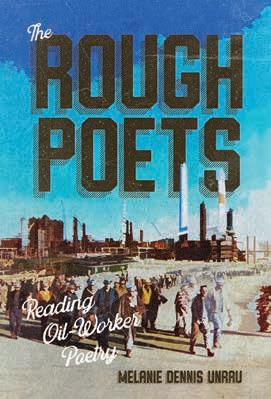

“ This book adds much to our understanding of industrial workers as fully realized people with a complex relationship to their labour and with a voice that is bigger, if we listen, than the mantras of oil corporations that have historically dominated the discussion.” Kate Beaton, author of Ducks: Two Years in the Oil Sands
Another Order: Selected Works by Judith Copithorne. Eric Schmaltz, Ed. (Talonbooks $34.95)
BY TREVOR CAROLAN
From the early countercultural stirrings of Vancouver’s Sixties, poet and all-around femme de lettres, Judith Copithorne has been a significant participant in bringing challenging words and images from the city to the larger world. Her probing crossmedia experiments with visual and concrete poetry broadened the limits of what Canadian literary adventuring could be, and in doing so, helped budge Vancouver from its once gender-biased, colonial identity.
Nevertheless, for much of her more than 50 years of practice, Copithorne has remained something of an obscure figure. With this compelling, 340-page book compiled by editor Eric Schmaltz, the fuller nature of Copithorne’s creative explorations—that frequently appeared in small, limitedrun editions—is displayed convincingly. The dynamics of her work, as Schmaltz explains, have encompassed “illustration, sketching, calligraphy, and typewriting while bringing together poetry, visual art, comics, life writing [and a] tireless fusing of technique, mode and genre.”
Two-thirds of the book is indicative of Copithorne’s enduring interest in verbal and graphic-writing explorations that, while timely now, back then were associated with the avant-garde poetics of fellow writers like bill bissett, bpNichol and Pierre Coupey . With typesetting not easily available, Copithorne’s mode was to marry handwritten lines of her poetry with drawings that echo Haight-Ashbury’s Sixties poster art, making it visually effective yet demanding to read. In tracing the geography of her poetic meditations on self, love, lost love and emotional change, Copithorne’s epigrammatic visual art-poems are emblematic of the gestalt of Vancouver’s generational quest for a deeper authenticity at that time, including growing interest in Asian philosophies. BC arts veteran, Ed Varney has commented how Copithorne’s visual effect was “mandelic: [she] was turning poetry into a mandala.”
With Vancouver’s academic and “downtown” poetry scenes still dominated by male fraternities, Copithorne’s explorations served to pave the way for a Seventies generation of younger feminist writers at a time when women writers and their books needed more visibility. Schmaltz’s selections of Copithorne’s prose, for example, shows her conversant with the diary poetics of Anaïs Nin, a formative voice in world literature’s feminist awakening. Nin and Copithorne showed others how to bring intimacy into their language.
A substantial excerpt from Copithorne’s Heart’s Tide (1972) offers a fictional-biographical portrait of the typical struggles of a younger woman in those times. From childhood selfawakening to adolescent adventuring with men looking to take advantage,

Judith Copithorne (circa 1980s) used illustration, sketching, calligraphy and typewriting to bring together poetry, visual arts, comics and life writing.
to accounts of an affair with a married lover, then life in a crummy residence hotel, and an edgy bus journey to San Francisco, the narrator recounts her daily life routines and the energy from a growing sexual liberation. When unexpected pregnancy and medical distress intervene with unfounded accusations of abortion, the work’s dream accounts and stream-of-awareness techniques present Copithorne with an opportunity to address one of the most acute feminist issues of that era. Her closing resolution feels open-ended: “Hanging on to nowhere to go. Sighing like the wind in the trees.”
Schmaltz’s introduction notes how “slants towards other genres, including the closely related field of comics” is evidenced in Miss Tree’s Pillow Book, originally an innovative Intermedia publication. Melding antic humour, cartoons and references to Zen Buddhism’s “Middle Way,” it’s a sophisticated handwritten comic narrative for enthusiasts that’s “Hooked on love / in love with love they say.” Later, Copithorne’s purely visual designs become more complex, futuristic, and the insert
of 14 superb colour images resonates with vestigial Celtic imagery echoing medieval Hibernia’s Book of Kells
Copithorne is known as a poet with a reputation for toughness, so the frequent references to love and tenderness throughout her poems may catch some unawares. Early selections feature irregular and slant rhyme; there’s talk in her poem Returning about how “memories live in our blood…”. From the Seventies, her craft features greater sharpness of language that grows in density and lyric movement: Who are we now, the always mystery?
Questions, more than answers when we: man, woman body on body: spine moving are bigger than these words and these words attain their meaning.
When in As the Years Turn she writes, “spring is so short in our burden of months,” there’s an expanding sense of her work as a serial in which the poems in their beauty and fluency of language unfold from a narrative Oneness. Similarly in Tempering:
…there are countless stories, rivers without end, rain plummeting to the shed roof. Today is felt in shivering ecstasy, frantic, magic, unknowing… years pass, love falls nameless to autumn’s track.
In the mature selections from the Eighties onward there’s increasing attention paid to ways of seeing: “… We heard you watching the yellow / bird and we said / she is seeing some colours / singing.”
Copithorne’s poetic subjects are diverse and tastefully uncomplicated: making yogurt, prose-poem reflections on cityscapes, glimpses into the I Ching, a raunchy, erotic quintain [“I want you…”]. Recent years have seen her star rising as a one-of-a-kind artist from the coastal city she loves. At times abrupt, strong, vulnerable and a revealing teacher, she has known everybody and worn many hats, emerging as a wise elder sister for anyone taking the time to delve into her eclectic bibliography.
“What we have done then,” she contends in Arrangements, “was the best we could do / There should be more… / will be / since all things change / and continue, also.”
9781772015539
Trevor Carolan writes from North Vancouver.
BY BEVERLY CRAMP
Eleven-year-old Addie lives near the beach with her surfer mother, Jeanie, and little brother, Billy, in a rundown, tourist rental cabin in the fictional town of Cedarveil on Vancouver Island. It’s a precarious life yet Addie finds much to like about it as described in Jenny Manzer’s novel Picture a Girl, for readers 9–12. Addie is especially fond of the stories their mother tells them at night before they go to sleep
“I collect stories the way the tooth fairy collects teeth,” says Addie. “Every night before we turn out the lights in the cabin, she tells us a story. The story could be about me and my brother, Billy, though it’s often about some adventure in Mama’s life.”
Jeanie is a good storyteller and she puts it to good use because they can’t afford a TV. Sometimes there isn’t a lot of food either, making their home food-insecure and trips to the food bank necessary.
What brought Jeanie to Cedarveil is her passion for surfing. The independent minded Jeanie supports her family by working shifts in a nearby café kitchen although the work is not steady. “We have lots of people here who work around the clock in summer and can’t find a job in winter,” says Addie. “Mama is somewhere in between. If she surfs all the time, we run out of money and our lights get turned off.”
Clearly, Jeanie is not the most
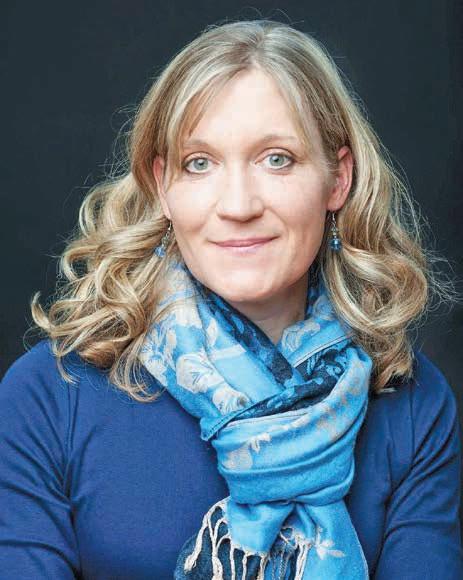
ie’s situation: her mother, Lillian, who was cold and never hugged her, often left little Jeanie alone at night. Lillian also made Jeanie cook and clean at the age of seven for boarders who lived with them. To get away from her unhappy childhood, Jeanie ran away from home as a young teenager, first to California where she discovered surfing. But the trauma had started earlier with Lillian’s mother, Elizabeth, who came to Canada as a “home child,” meaning she was wrenched from her own relatives in England to work on a farm far away; in this case, the Cowichan Valley. “They treated her like a maid,” Jeanie told Addie. “They never hugged her or gave her enough to eat. She never knew what mothers were supposed to do. Lillian never learned either.”
How two children survive life with a loving but troubled mother who occasionally leaves them for days at a time.
responsible parent. She is also an alcoholic who drinks every day, something that started a few years back after she hurt her back at work while unloading flour. But Jeanie’s worst parental behaviour is taking off for days on end with little explanation, and Addie is left to take care of Billy. Like the morning Addie wakes up to the note: “Dear Ad-
s children, Grant Lawrence and his sister liked being indoors watching TV. Their father preferred hiking outdoors and that meant taking his children, wife and the family dog, Addie, along with him. And it usually involved staying in soggy, smelly tents.
“Dad called it camping. We called it awful,” writes Lawrence in his second kidlit title, Adventures in Desolation Sound (Harbour $24.95), for ages 4–7, illustrated by Ginger Ngo and inspired by Lawrence’s bestselling adult book, Adventures in Solitude (Harbour, 2010).
Not to be deterred, Lawrence’s father comes up with the idea of building a cabin in a remote area in Desolation Sound. While the cabin wasn’t soggy or smelly, there was still no TV. But soon the children learn to enjoy the wildlife, like the day a seal pops its head out of the water right next to their boat. Near their cabin, Lawrence writes that they “could look right down into a little cove. The water was so clear, we could spy all sorts of amazing underwater sea creatures.” And then
elaide and Billy, Gone for a little adventure. Love you, Mama.” What follows are the extraordinary predicaments that Addie must deal with to prevent anyone finding out they have been abandoned, and take her and Billy into foster care. At one point, Addie enters a surfing contest to try earn some money.
Manzer provides backstory to Jean-

Nonetheless, Addie and Billy feel loved by their mother. How Addie is able to express this, while also communicating her anger towards her mother for leaving them, is told skillfully by Manzer in a realistic fashion. There are no fairytale endings either, yet Manzer details in an age-appropriate way how a young girl copes with responsibilities and situations that no young person should have to.
Victoria-based Jenny Manzer ’s previous YA novels are the Bolen Books Children’s prize-nominated Save Me, Kurt Cobain (Delacorte Press, 2016), about a young girl who thinks her father is the late rock star, Kurt Cobain; and My Life as a Diamond (Orca, 2018), the story of a transgender youth, a star baseball pitcher, who wants to keep his secret until he’s ready to reveal it, which was shortlisted for many awards including the Chocolate Lily, Silver Birch and Victoria Children’s Book Prize. 9781459836662
there were the nearby neighbours, people like Russell the friendly hermit and Cougar Nancy By the end of the summer Lawrence and his sister “almost forgot that we even had a TV,” he says. It was the beginning of many happy summers in Desolation Sound.
9781990776878
OAuthor of numerous acclaimed books for children, Kallie George’s latest picture book, Mushrooms Know: Wisdom from Our Friends the Fungi (Greystone Kids $23.95) for ages 4-8, explores the lessons fungi can teach us. With illustrations by Sara Gillingham, the book celebrates the might of small things, the value of uniqueness and the importance of staying connected. Featuring over fifty types of mushrooms, the book includes sidebars with wild facts, such as mushrooms that can grow through cement or glow in the dark. It also contains back matter that delves deeper into the science of fungi. Additionally, the book imparts important life lessons about helping each other and maintaining cleanliness.
Based on the Sunshine Coast, George teaches creative writing workshops when she’s not writing. Some of her previous titles that gained praise include the Tiny Tails series (Simply Read Books, 2014) that explores the notion of self-control in a playful way, and the Magical Animal Adoption Agency series (HarperCollins, 2016) that features little Clover, who discovers a magical cottage in the woods which is home to fairy horses, unicorns and a fiery dragon.
Illustrator Gillingham is an award-winning art director and designer. She lives in Vancouver.
9781778400773




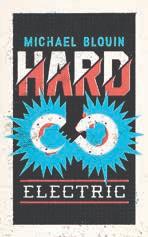

After We Dro W ne D Jill Yonit GoldberG
After an oil rig in the Gulf of Mexico explodes, everything in fifteen-year-old Jesse’s life deep in rural Louisiana is derailed. After We Drowned is a Southern Gothic coming-of-age novel that deals with environmental crisis, poverty, and the power of secrets.
$22 | n ovel | 256 pa G es | 978-1-77214-227-3
Pl A ylist: A Proflig A cy of y our l e A st- e x P ecte D Poems
Michael turner
Playlist: a Profligacy of Your LeastExpected Poems documents the life and practice of a writer who grew up in a musical household, spent his early adult years as a touring musician and his later years programming nightclubs, hotels, galleries and festivals.
$20 | p oetr Y /Me M oir | 128 pa G es 978-1-77214-228-0
t he t en A nts pat dobie
Winner of the 45th Annual 3-Day Novel Contest
In the city of Vancouver, even dirt costs. In The Tenants three of its residents are struggling with their homes — whether that’s grappling with real estate prices, simmering resentments, or an uneasy co-living arrangement with the local wildlife.
$18 | n ovel | 96 pa G es | 978-1-77214-229-7
Permission to settle hollY Flauto
Permission to Settle fills in the blanks of the application for Permanent Residency, capturing common aspects of immigration — anxiety, bureaucracy of application, identity, foreignness, inadequacy — all while exploring the sense of privilege that comes from the geographically and culturally close immigration journey from the US to Canada as a modern-day settler.
$20 | p oetr Y | 112 pa G es | 978-1-77214-238-9
hArD electric
Michael blouin
Celine Dion’s first North American hit posed the question: ‘Where do all the lonely hearts go?’ Hard Electric presents a bleakly unsettling but ultimately lifeaffirming treatise that shuffles into the neighbourhood of an answer.
“One of the most moving books I’ve ever read, with some of the wisest lines ever written.” — bill bissett
$20 | p oetr Y | 128 pa G es | 978-1-77214-240-2
ox lost, snoW DeeP alice burdick
These poems deal with semi-rural existence, raising a family, and living in poverty. Burdick confronts excruciation, apology, loss, humour, mistakes, and grief—and the freedom achieved by acknowledging these things. Ox Lost, Snow Deep will alter your ways of thinking and reading.
$20 | p oetr Y | 96 pa G es | 978-1-77214-241-9 a Feed d o G b ook
AVAILABLE IN CANADA FROM PGC/RAINCOAST AVAILABLE IN THE U.S. FROM ASTERISM asterismbooks.com


We love our dogs and we talk to them a lot. They take us seriously, but do we take to heart what they try to tell us in return?
Inspired by true events, Lessons from Tokyo captures some of the most endearing attitudes of her Shiba Inu that Lucy considers as valuable teachings and reminders.
Now available for your favourite young readers, aged 2 through 7. amazon.com apple books barnesandnoble.com booksamillion.com bookwarehouse.ca kobo.com indigo.ca thriftbooks.com photosandpages.com

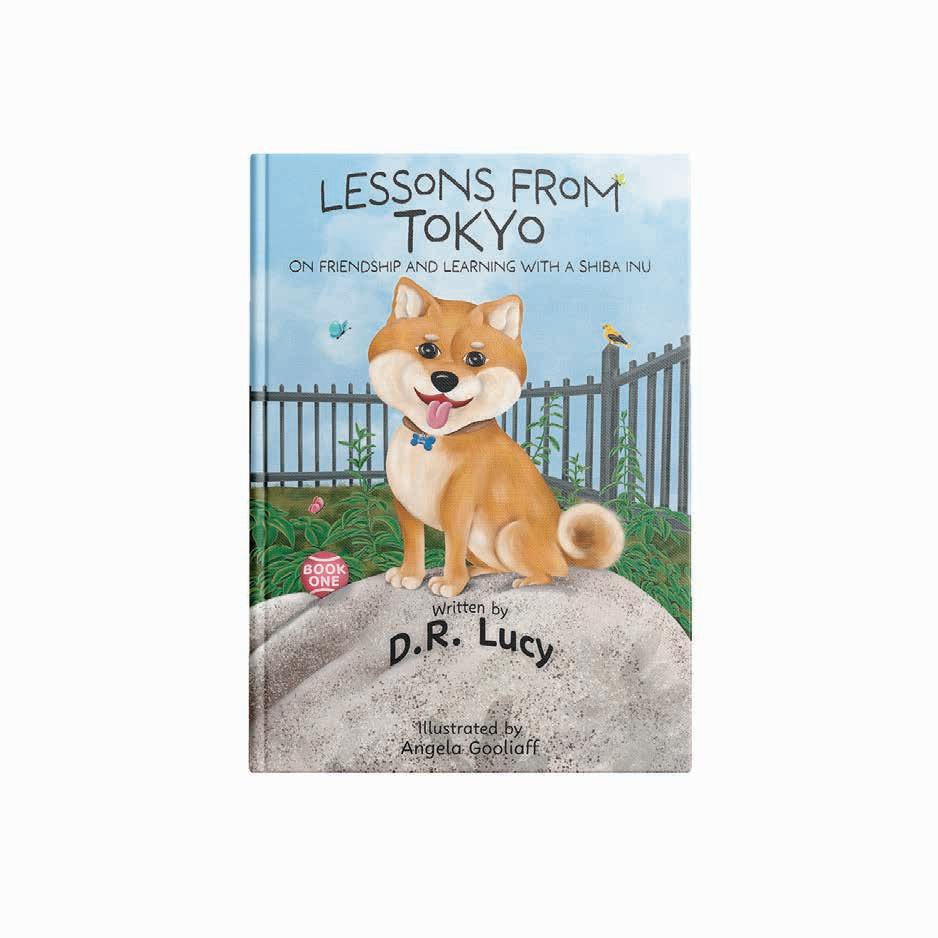


A recently separated woman relocates to a small northern town, where she receives a life-changing visitation; a Russian hitman, suffering from a mysterious lung ailment, retrieves long-buried memories of his past; and two addicts, looking to fund their recovery, go on a robbery spree of high society parties on New Year’s Eve. All are characters seeking some level of happiness in Caroline Adderson’s collection of short stories, A Way to Be Happy (Biblioasis $22.95). 9781771966221

Born blind, Doris Belusic shares her lived experience and advocacy in the children’s book, I Am Blind (Beech Street Books $25.24). Part of the “I Am” series, for grade three to six readers that uses diverse, real voices, Belusic has practical sections such as “11 Ways You Can Assist a Blind Person” and “Seven Tips for Blind Children.” She discusses the causes of blindness and tools such as braille, white canes, guide dogs and technology. She also includes a chapter called “Life is Good.”
9781774565063

In her debut memoir, Musings of a Housework Avoidance Expert—50 Tiny Tales (Filidh Publishing $26.95), Charmaine Welch features micro stories from her life as an occasional columnist for her local community newspaper, Metchosin Muse, a mother of four children and an inveterate maker of “stuff” (sewing, knitting, beading)— all of which Welch says are part of her “housework avoidance program.” Welch’s tales invariably focus on her large, blended family and following one’s own path. 9781927848845

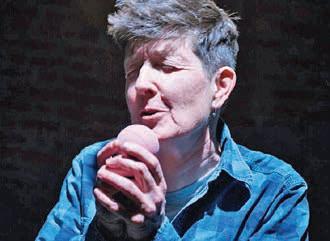
the side effects of psychiatric treatment play a major role (Derbyshire co-hosts the mental health podcast Mad Practice). In a quirky move, Derbyshire deploys fictional appearances by author Miriam Toews and the late actor, Margot Kidder 9781773102948
Vancouver-based comedian and playwright, JD Derbyshire, has released their first novel, Mercy Gene: The Man-Made Making of a Mad Woman (Goose Lane Editions $22.95), following protagonist Janice/Jan/JD through erratic recollections, lists, daydreams and poetry. Themes about

The Vancouver Canucks have taken their fans on a rollercoaster ride of hope and disappointment over the past five decades. In Never Boring: The Up and Down History of the Vancouver Canucks (Harbour $28.95), Ed Willes, a veteran hockey writer, covers the tumultuous journey of the team as it has
fallen short of delivering the coveted Stanley Cup. Willes details ownership missteps and unpredictable strokes of bad luck in his insights into the team’s struggles and near misses.
9781990776892
As the rise of audiobooks points to the appeal of hearing words rather than seeing them, researchers are finding that speaking, listening and recording (what they refer to as “sonic practices”) are also effective ways of getting across political and aesthetic dissent. Print has historically dominated the literary, artistic and academic realms in Canada but in their scholarly book, Resistant Practices in Communities of Sound (McGill-Queen’s University Press $39.95), editors Deanna Fong and Cole Mash have gathered essays that make the case for combining the oral and the written, and attuning ourselves as listeners as well as readers.
9780228021223

Environmental journalist David Geselbracht’s Climate Hope: Stories of Action in an Age of Global Crisis (D&M $24.95) is an exploration of efforts around the world to combat climate change. These stories aim to replace fear with hope and determination. The enormity and complexity of climate change often leads to confusion and hopelessness, but Geselbracht blends expert interviews and on-theground reporting to highlight significant solutions and actions.
9781771624268


The story of a hidden city in BC’s Cayoosh Range is at the centre of Herschel Hardin ’s novel, Jack in Pemberland (FriesenPress $12.49).
Jack Lewicki, a former concrete truck driver turned aspiring nurse, explores how the city manages affordable housing and abundant health care without draining resources from other areas, and maintains a steadfast population cap of 100,000. Lewicki is amazed at how the residents in Pemberland are determined to keep it that way. The story introduces savvy characters such as Bark Lady, a sharp-witted store owner and Sir Willgraph Reesy, an expert on global warming. 9781038309044
Ian Kent’s novel, The Minoan Time Key: A Time Twisting Adventure into Greek Mythology (self-published $9.56) is set in 1908 on the island of Crete. An Italian archaeologist, Luigi Pernier, and his team uncover a clay disc with an undecipherable spiral message of 242 figures in the Phaistos Palace ruins. One of the team members, Canadian archaeologist Andrew Tucker, discovers an item with mysterious powers that propels him into a series of time-twisting adventures filled with trouble and a forbidden love affair with a mysterious, familiar beauty from ancient myth. 9781738093762
In I Feel That Way Too (Nightwood $19.95), Lambda Literary Fellow, jaz papadopoulos, examines the impact of sexual assault trials on survivors. As a response to the #MeToo movement, their debut poetry collection combines poetry with art, philosophy and personal memory. Papadopoulos uses the past and present to dissect how media and social structures uphold patriarchal ideologies. An educator and video artist, papadopoulos holds an MFA from UBC and describes themselves as “emotionalist” and an avid Anne Carson fan who is interested in media, horticulture, lyricism, nervous systems, anarchism and erotics. 9780889714687
Grace Kwan’s debut poetry collection, The Sacred Heart Motel (Metonymy Press $18.95) redefines concepts of time, space, art and the body. Their narrative poetry explores the public, private and hidden areas of a motel,
taking readers through its amenities, rooms, back alleys and the lives of ghosts and queer love stories. Kwan uses music as a thematic backbone, from nighttime quiet to orchestral crescendos. They are a Malaysianborn writer and sociologist based in Vancouver.
9781998898169
Mud puddles, speckled eggs and cozy sheep’s wool set the scene for a day in the country for young children. Laurie Elmquist’s picture book for ages 2 and below, Country Baby (Orca $10.95), follows mom and baby’s adventure that begins with pulling on rubber boots and splashing in puddles, petting sheep, and exploring farm sights and sounds. After the fun, they head inside to hang their socks to dry, take a warm bubble bath and snuggle up in bed under the stars.
9781459836334

When a best friend seeks help, Gerri willingly steps in as a substitute house-sitter at an Italian villa, as it is the perfect place to heal from her late husband’s infidelity. Nestled on picturesque Lake Como, Gerri finds herself drawn to Kate, a fellow guest from California. M.J. Milne’s latest novel, Secrets of the Italian Villa (Blue Heron $17.99), follows their blossoming romance as it takes a surprising turn when they delve into the villa’s mysteries, uncovering dark secrets that seem intertwined with Gerri’s own fate. Together, they transition from lovers to amateur sleuths, realizing Gerri’s journey to the villa holds a deeper purpose.
9780973965452
Neil McKinnon’s stories, based on his personal experiences, display human diversity, past and present, exploring the rich tapestry of cultures that shape our lives in A Ticket to the Grand Show: Journeys Across Cultural Boundaries (Your Nickel’s Worth $29.95). McKinnon provides a glimpse into the hidden cultural depths he encountered on his travels—some exotic, some tragic, some humorous and some dangerous.
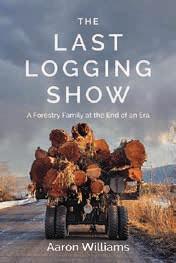
From Where I Stand by Jody Wilson-Raybould (UBC Press $24.95)
The Last Logging Show: A Forestry Family at the End of an Era by Aaron Williams (Harbour $24.95)
Having shaken up federal politics when she went from being a senior cabinet minister in Justin Trudeau’s Liberal government to becoming an independent Member of Parliament, Indigenous leader Jody Wilson-Raybould has published a collection of her speeches and lectures from the past ten years. She is forthright in her analysis of Canada’s colonial past and her desire for a new era of recognition and reconciliation.
Fresh out of high school in 2004, third generation logger, Aaron Williams was excited to go logging on Haida Gwaii. Thirty years earlier, his father had done the same thing. The difference is that Williams’ father went on to retire from logging; Williams knew his future lay elsewhere. This is his elegy to a passing way of life that was once a mainstay in BC.
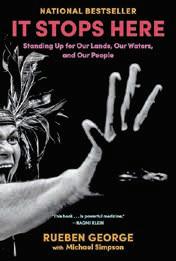
Every Little Scrap and Wonder: A Small-Town Childhood by Carla Funk (Greystone $29.95)
It Stops Here: Standing Up for Our Lands, Our Waters, and Our People by Rueben George with Michael Simpson (Allen Lane/Penguin $24)
Water Confidential:
Witnessing Justice Denied— The Fight for Safe Drinking Water in Indigenous and Rural Communities in Canada by Susan Blacklin (Caitlin $24.95)
Sockeye Silver, Saltchuck Blue by Roy Henry Vickers & Robert Budd (Harbour $9.95)
Susan Blacklin joined forces with her late husband, Dr. Hans Peterson to highlight the need for safe drinking water in many of Canada’s Indigenous communities. This memoir is Blacklin’s appeal to overcome indifference and corruption from governments in response to the crisis.
With catchy rhymes married to Roy Henry Vickers signature artwork, this children’s board book is the third instalment in a series that started with Humpback! One Eagle Soaring
The concepts of colours are linked to the changing seasons on the West Coast: red tones of huck leberries in summer, silver and red flashes of spawning salmon in fall, grey rain in winter, and the sprouting of green in spring.

Points of Interest: In Search of the Places, People, and Stories of BC edited by David Beers & andrea bennett (Greystone $24.95)
Essays from some of the best writers of the region including J.B. MacKinnon, Alisa Smith, Cúagilákv (Jess Háusti), Arno Kopecky, Harrison Mooney, Michelle Cyca, Christopher Cheung, and many more who reflect on the characters and issues that define our province.
The Survival Guide to British Columbia by Ian Ferguson (Heritage House $19.95)

9781778690235
M.J. Milne
Poet Carla Funk grew up in a Mennonite community in Vanderhoof. After publishing five books of poetry, this is her first memoir, a paean to childhood and rural life in British Columbia. Paying tributes to both her church-going mother and her truck-driving father, she uses rich language to create the world that shaped her as a person and writer.
The grandson of Chief Dan George of the Tsleil-Waututh First Nation, Rueben George grew up with deep ancestral connections to the lands and waters, known today as Vancouver and Burrard Inlet. It led him to become one of the fiercest leaders protesting the Trans Mountain Pipeline expansion. A memoir and call to action.

Having moved to B.C., humorist Ian Ferguson finds the place pretty – but also pretty scary. Here’s his guide on surviving everything from the province’s politics, the locals and the weather, to our food and fashion sense. Some ‘Fergusonian’ wisdom: B.C. is located – “to the left of Alberta”; speaking to B.C.’ers, means “not saying anything beyond, ‘I love trees’ and ‘forgive me’; and, you can “tell an outsider (filled with enthusi asm and interest) from a local (full of resentment and ennui).”


Wildlife biologist, Wayne McCrory, draws upon twenty years of research to tell of his intellectual and emotional journey toward accepting that the wild horses of the Chilcotin are a key part of the area’s ecosystem. Long a controversial issue, wild horses are still viewed by government policy as intruders that compete with native species and domestic cattle for range land, and as such are subject to culls and given no protection. McCrory
also chronicles the rich relationship that the Tŝilhqot’in First Nation have with wild horses, to whom these animals are sacred and a symbol of freedom. The Tŝilhqot’in maintain their horse culture existed long before settler colonization and McCrory uses in-depth biological and genetic research to prove this point while juxtaposing the First Nation’s efforts to protect wild horses against movements to cull them.
Sheltering in the Backrush: A History of Twin Islands (Harbour Publishing) by Jeanette Taylor
The Notorious Georges: Crime and Community in BC’s Northern Interior, 1905–25 (UBC Press) by Jonathan Swainger
The Basil Stuart-Stubbs Prize was established in memory of Basil Stuart-Stubbs, a bibliophile, scholar and librarian who passed away in 2012. Stuart-Stubbs’ many accomplishments included serving as the University Librarian at UBC Library and as the Director of UBC’s School of Library, Archival and Information Studies. Stuart-Stubbs had a leadership role in many national and regional library and publishing activities. During his exceptional career, he took particular interest in the production and distribution of Canadian books and was associated with several initiatives beneficial to authors and their readers, and to Canadian publishing. Pacific BookWorld News Society co-sponsors this award with UBC Library.


In his essay collection exploring topics like civic monuments, family history and end-times in the Arctic, Stephen Osborne, founder of Geist magazine and a CBC Literary Prize winner, highlights everyday coincidences within the broader scope of life in his book The Coincidence Problem (Arsenal Pulp $24.95). From city centres to the Arctic’s edges, Osborne’s essays cover subjects such as global terrorism and the lynching of Indigenous youth Louie Sam. A modern flaneur, Osborne investigates the city, translating the ordinary and deflating the pretentious.
9781551529653
A wife, and mother, with experience in early childhood education, Shanelle Poucher is dedicated to writing children’s books for ages 3 – 6. Her My Pal Brainy series has debuted with My Pal Brainy’s First Day of Daycare (selfpublished $15). Poucher’s books aim to open minds and foster positivity, self-belief and perseverance in young readers. The series emphasizes selftalk, self-respect and manners while teaching children to handle difficult situations from various perspectives. Poucher promotes the value of giving back and includes educational components to help children understand new words and concepts. 9798325070181
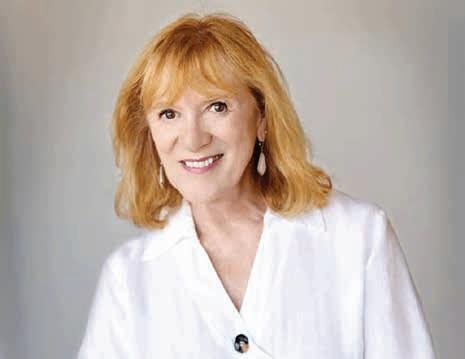
2011, Genni Gunn was long-listed for the Giller Prize for Solitaria (Signature, 2010).
tIt is June 1940 and fifteen-year-old Anglo-Italian Olivia Baldini’s English life is disrupted when Britain declares war on Italy in Genni Gunn’s latest novel, The Cipher (Signature Editions $22.95). Olivia’s extraordinary memory makes her invaluable to Winston Churchill ’s Special Operations Executive (SOE), where she is trained in nursing, coding and espionage. Meanwhile, Nino Fabris, an Italian Merchant Marine, is captured in North Africa and sent to a POW camp in Kenya. Nino joins the British SOE for a chance at freedom. Olivia and Nino briefly meet in London before being sent on separate perilous missions. Despite the chaos of war and having loved ones back home, their bond grows. Gunn has published thirteen books. 9781773241425
Indie-pop twin-sister duo, Tegan and Sara Quin ’s second middle-grade graphic novel, Crush (Farrar, Straus and Giroux $19.99) continues their autobiographically inspired story. Eighth grade brings new challenges: Sara has a crush on a girl, Tegan has fallen out with her former BFF and a battle-ofthe-bands contest is looming. Balancing school and music, the twins face fame, family and self-discovery. This conclusion to their Junior High series serves as a prequel to their best-selling adult memoir, High School (Simon & Schuster, 2020). 9780374313043
Stretching from the West Coast to the Canadian prairies, Billy-Ray Belcourt ’s collection of stories, Coexistence (Hamish Hamilton $29.95) highlights Indigenous love and loneliness. Stories include an aging mother’s confession about an intimate friendship from her past, a poet’s existential crisis and a former prisoner’s struggles to grapple with strictures outside of a prison cell. Belcourt has won the Ethel Wilson Fiction Prize and the Griffin Poetry Prize. He teaches at UBC where he is Assistant Professor of Indigenous Creative Writing. 9780735242036
During the pandemic lockdown, Rob Taylor found solace in a nearby wooded area where he wrote haiku amidst nature resulting in Weather (Gaspereau Press $25.95), which chronicles the first three years of his daughter’s life through 156 weekly poems, reflecting on intimacy, contemplation and life’s small moments. It follows on from his previous work of eight years ago, The News (Gaspereau, 2016) when he wrote 36 poems during his wife’s pregnancy with their first child. 9781554472635
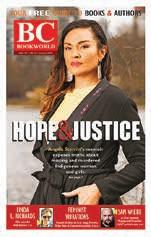





Bird lovers Reeni and her friend Yasmin decide to count birds for a school survey project in Uma Krishnaswami’s Birds on the Brain (Groundwood $11.99) for ages 9-12 years. They know that their city regularly participates in Bird Count India, a global movement to monitor bird populations. But when they begin surveying their neighbours, no one knows about the upcoming nationwide event. They also discover that the mayor plans to shut down the annual count in their city. With help from Reeni’s family and “Book Uncle,” a retired teacher who has a free lending library on the street corner, the two girls rally their community to advocate for birds.
9781773067391
It’s the late 1880s in Germany and Johanna, daughter of a migrant cobbler from Pomerania, dreams of a better life in the novel, The Imposter (Addison & Highsmith $39.99) by Johanna van Zanten. Johanna finds a job as a housemaid for a wealthy family. However, when her master tries to assault her, she takes another job running a concession shop for the railroad, where she falls in love with the construction superintendent, a Dutchman named Hendrik. They eventually marry, have five children together and settle on a farm in Hendrik’s home town. But will Johanna remain loyal to her family once the Nazis invade?
9781592113767
Corinne George grew up near Telkwa in Northern BC along the Highway of Tears where many Indigenous women and girls have gone missing or were murdered. In her memoir, Alha Disnii: My Truth: Words from a Wet’suwet’en Woman (Medicine Wheel $19.99) with a foreword by Grand Chief Stewart Phillip , George speaks to her realities and experiences as an intergenerational survivor of residential schools. “It was not uncommon to receive inferior treatment,” says George. “There were even times when I was overtly targeted.” By sharing her truth, George contributes to the reconciliation process by spreading information about the impacts of colonization on Indigenous Peoples. 9781778540417
Inspired by Dr. Suzanne Simard ’s work on tree communication, Annette LeBox’s Mother Aspen: A Story of How Forests Cooperate and Communicate (Groundwood $22.99), for ages 3-6 years, follows an aspen grove through the seasons. The ancient Mother Tree awakens in spring, sending up sprouts that appear as separate trees but are connected. Above ground, aspens produce sugar using sunlight; below, fungi feed on this sugar and relay messages between trees, warning of drought, disease and infestations. The Mother Tree nourishes the grove and its inhabitants. Illustrated by Crystal Smith, this story highlights the importance of conserving aspen forests.
9781773069357
Award-winning poet Yvonne Blomer’s Death of Persephone (Caitlin $20.00) reinterprets the Greek myth of Persephone through Stephanie, a sevenyear-old girl taken and controlled by her obsessive Uncle H. As she grows, he tries to keep her under his control. Through lyrical and narrative poems, the story unfolds in a city with an extensive underground where bats hang and paperwhites bloom, dominated by men. Characters include a woman painting Hecate on a building, a Hyacinth Macaw flying overhead and a detective stumbling through various crimes. The narrative explores who perceives the truth, who will face consequences and who will survive.
9781773861555
After more than fifty years as a practicing poet, David Zieroth has curated, and arranged chronologically, a retrospective of his works in first here and then far: Selected Poems 1971–2024 (Harbour $24.95). This collection showcases Zieroth’s evolution from early reflections on his Prairie childhood to later considerations of family and history. His poems, rooted in daily life, reveal unexpected insights as Zieroth draws inspiration from international travels and everyday observations. A poet at the peak of his powers.

9781990776915






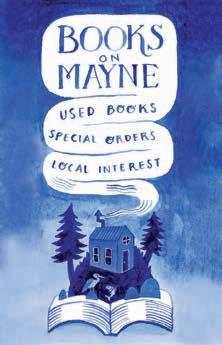


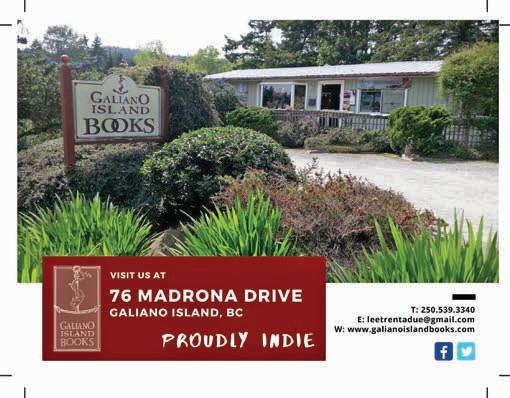
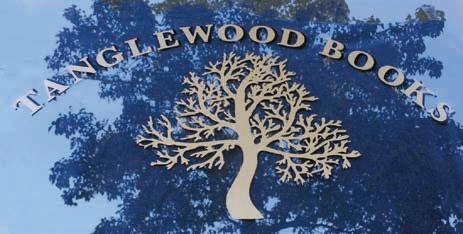



“The
ISBN:



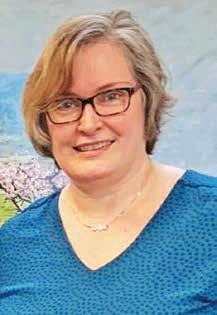
ne of Canada’s largest independent publishers, Victoria-based Orca Book Publishers is celebrating its 40th anniversary. Orca’s 50 employees produce more than 85 new books each year for young readers and the company has over 1,000 titles in print. Founded in 1984 by Robert Tyrrell, it is now owned by Andrew Wooldridge and Ruth Linka. “We believe that creating meaningful and thoughtful books for our youngest citizens is the best way to be a part of the change we want to see,” says Linka. The company has published many best-selling and award-winning titles including: Waiting for the Whales by Ron Lightburn and Sheryl McFarlane, Speaking Our Truth: A Journey of Reconciliation by Monique Gray Smith, Welcome Song for Baby by Richard Van Camp, Pride Puppy by Robin Stevenson and Julie McLaughlin, and The Witness Blanket by Carey Newman and Kirstie Hudson Orca operates from a head office in a big yellow house in Victoria’s North Park neighbourhood, with warehouses in Vic West and Washington State that distribute Orca’s own titles along with those of sixteen other publishers throughout North America. Most Orca staff work in Victoria with others based in Ontario, Edmonton, central Vancouver Island, Washington State and France.
Novelist and playwright, Rachel Wyatt (Order of Canada—CM), was born in Bradford, England on October 14, 1929 and emigrated to Canada in 1957. Originally a radio dramatist, scores of Wyatt’s plays were performed on BBC (London) and CBC. In Canada, Wyatt began to publish stories in magazines and later she published more than a dozen novels in addition to plays for theatre and radio. As of 1986 she was closely associated with the Banff Centre for the Arts, first as an instructor and then as its director of writing programs until she moved to Victoria in September of 1993. “Her novels and plays are full of the detailed strangeness of life as it could only appear to her,” says fellow Victoria author, Marilyn Bowering. “Often, I felt that reading Rachel was like finding Barbara Pym, Stephen Leacock, and a dash of John Cleese in one sensibility.” Wyatt received the Queen’s Jubilee Medal in 2003. She died in Victoria on July 7, 2024.
Prolific BC street poet, Tim Lander, died on August 20, 2023. He performed his poetry with a penny whistle, and sometimes a piccolo, at countless outdoor locations, although he was known to read indoors at Nanaimo’s Bookstore on Bastion Street until it closed in November 1999. He also travelled to Vancouver to read his poetry at Granville Island and other locales before he suffered a stroke in 2010. Born in Surrey, England on February 26, 1938, Lander emigrated to Canada in 1964. He preferred publishing chapbooks although he published three collections through traditional publishers: the glass book (Ekstasis, 1999); Inappropriate Behaviour (Broken Jaw Press, 2006) and Old Man, Old Dog (Second Storey, 2016).
My heart sank as I read the opening paragraphs of the review of the berry takes the shape of the bloom by andrea bennett [BC BookWorld, Summer 2024]. In 2017 the Regional District, a level of government that includes the City of Powell River, changed its name from the Powell River Regional District [to qathet Regional District]. Many [local] organizations have chosen to include ‘qathet’ in their names instead of Powell River, but the City itself, and its citizens, are still exploring the issues around changing the name.
Patricia Wilkinson Powell River
Editor’s note: Our review erroneously conflated the City and Regional District regarding a name change. The City of Powell River remains the name of the municipality while the Regional District officially changed its name to qathet in 2018. More info: www.qathet.ca
In BC BookWorld’s Spring 2024 fiction roundup, the publisher of The World is But a Broken Heart by Michael Maitland was mistakenly attributed to HarperCollins. The publisher is Signature Editions.
Send letters or emails to: BC BookWorld, P.O. Box 93536, Vancouver, B.C. V6E 4L7 bookworld@telus.net Letters may be edited for clarity & length.

A new addition to the literary ecosystem of BC is Wildfires Bookshop in New Westminster (situated on the territories of the Halqeméylem speaking peoples). The bookstore is operated by Samita Manhas, an educator, disruptor, community builder and activist according to the store’s website. In an interview with The New Westminster Record , Manhas said, “I think it’s a dream for a lot of people to run a bookstore. For me, the idea of curating and sharing books with different experiences, and possibilities is really exciting. I grew up in New West, and I’ve always wanted to have a place here where I can go to find books that are not just in the mainstream.” Wildfires offers an excellent selection of progressive books in a cheerful, cozy space: Wildfires Bookshop, 712 B 12th Street, New Westminster. wildfiresbookshop.ca
Yoka’s Coffee...22





